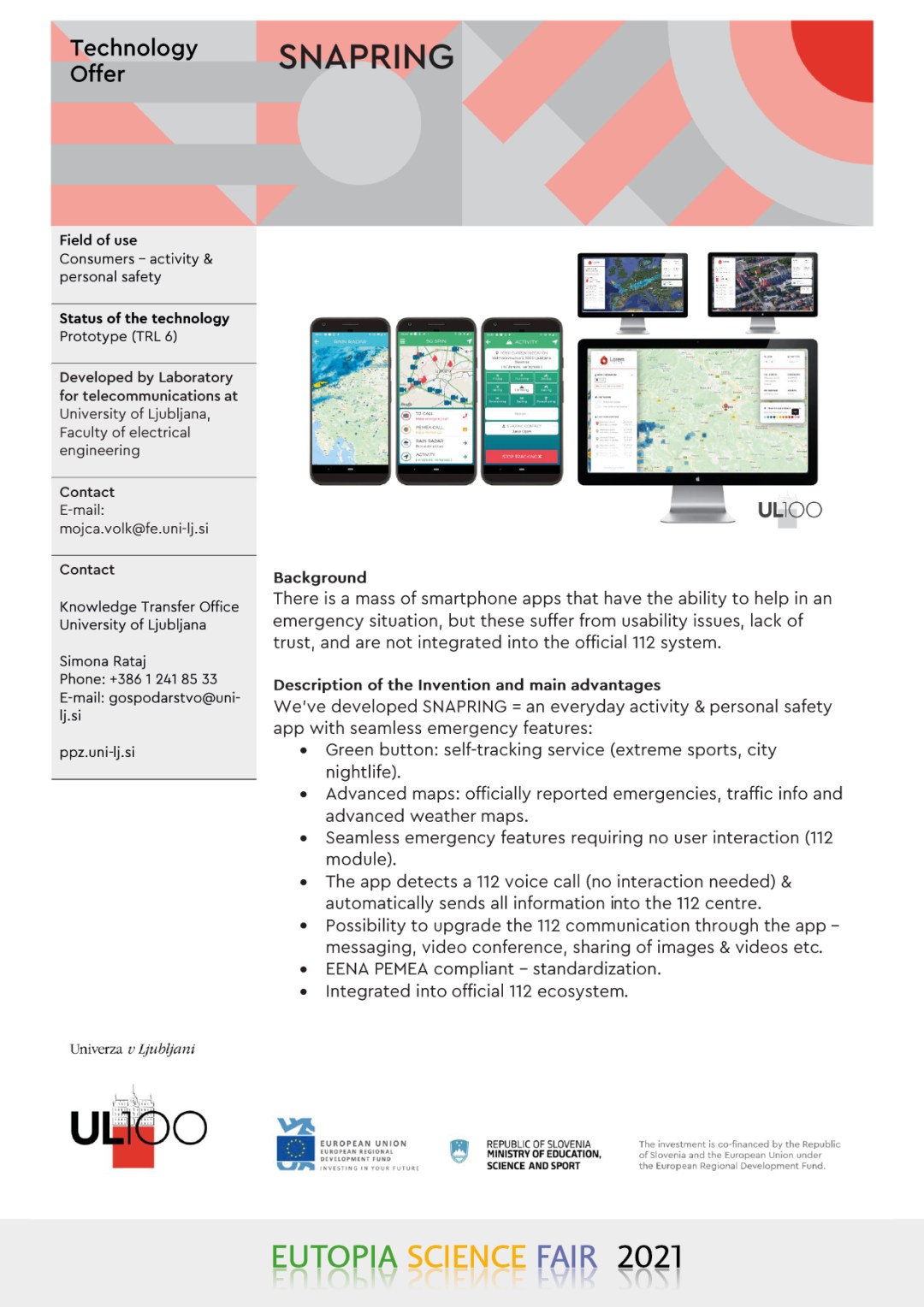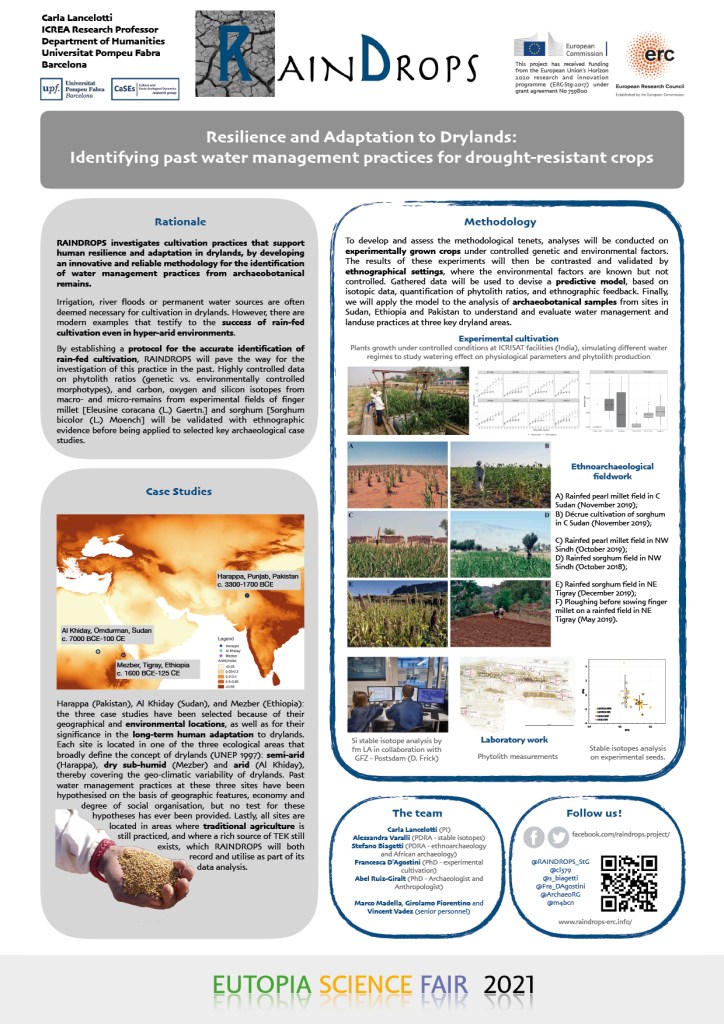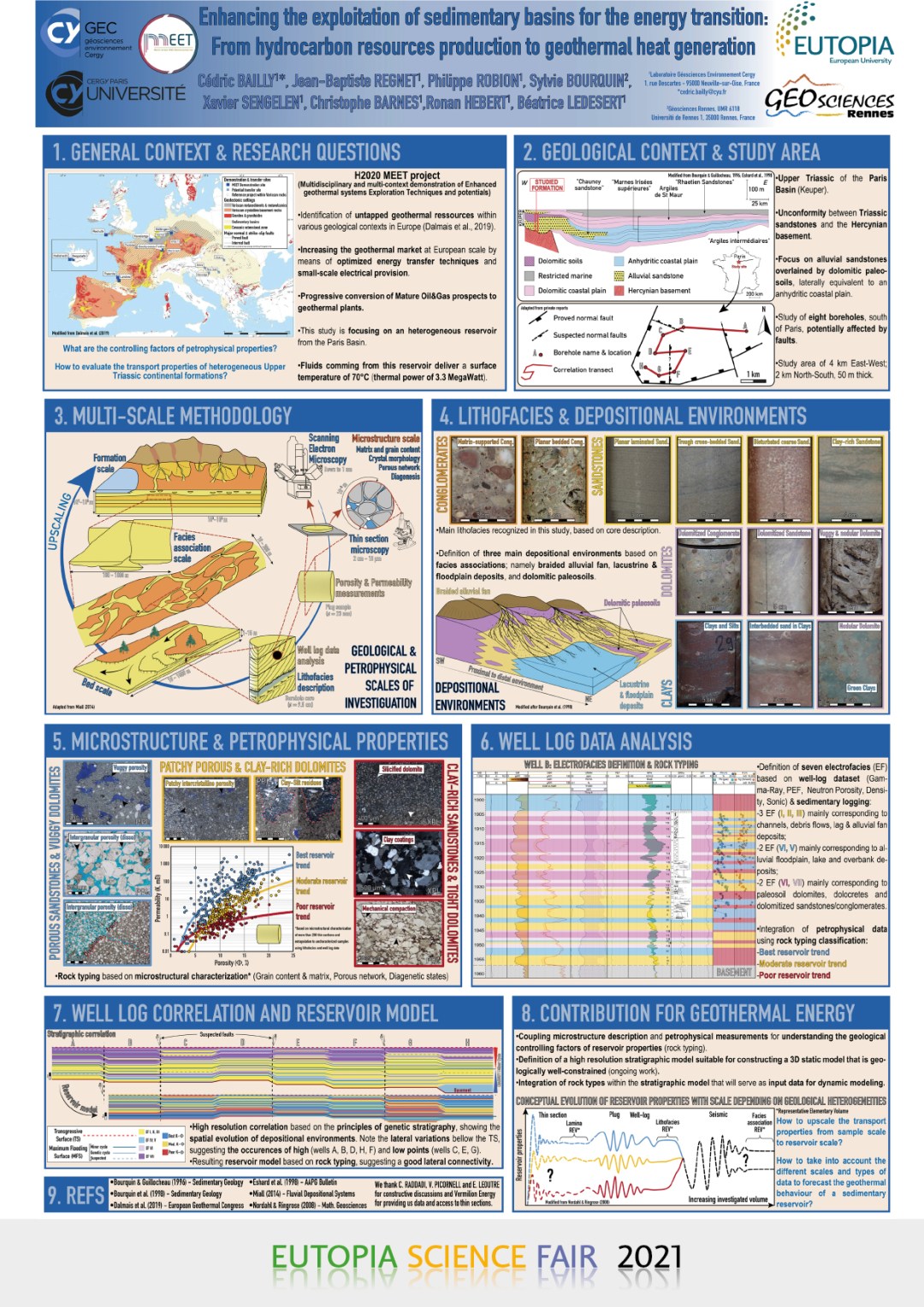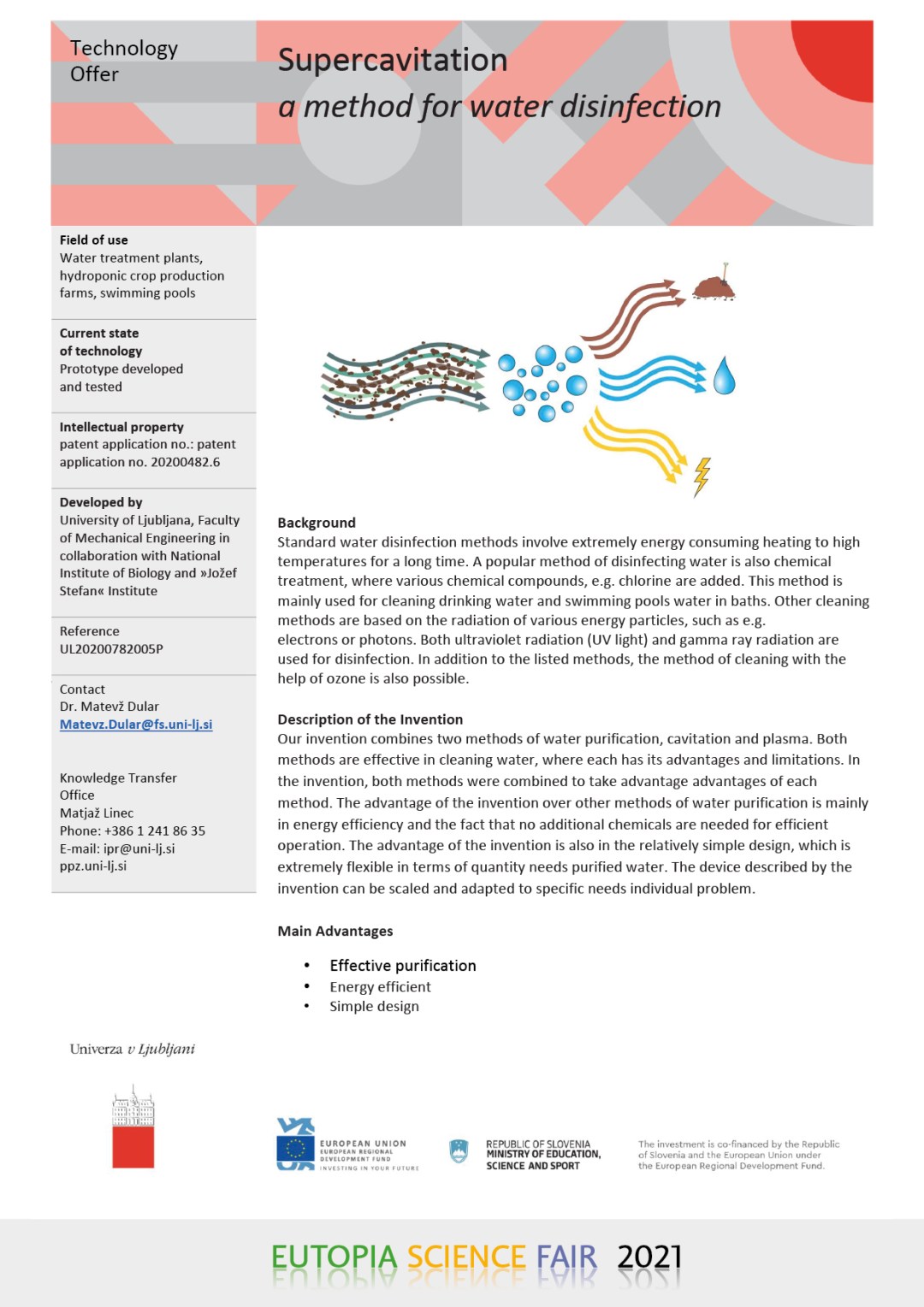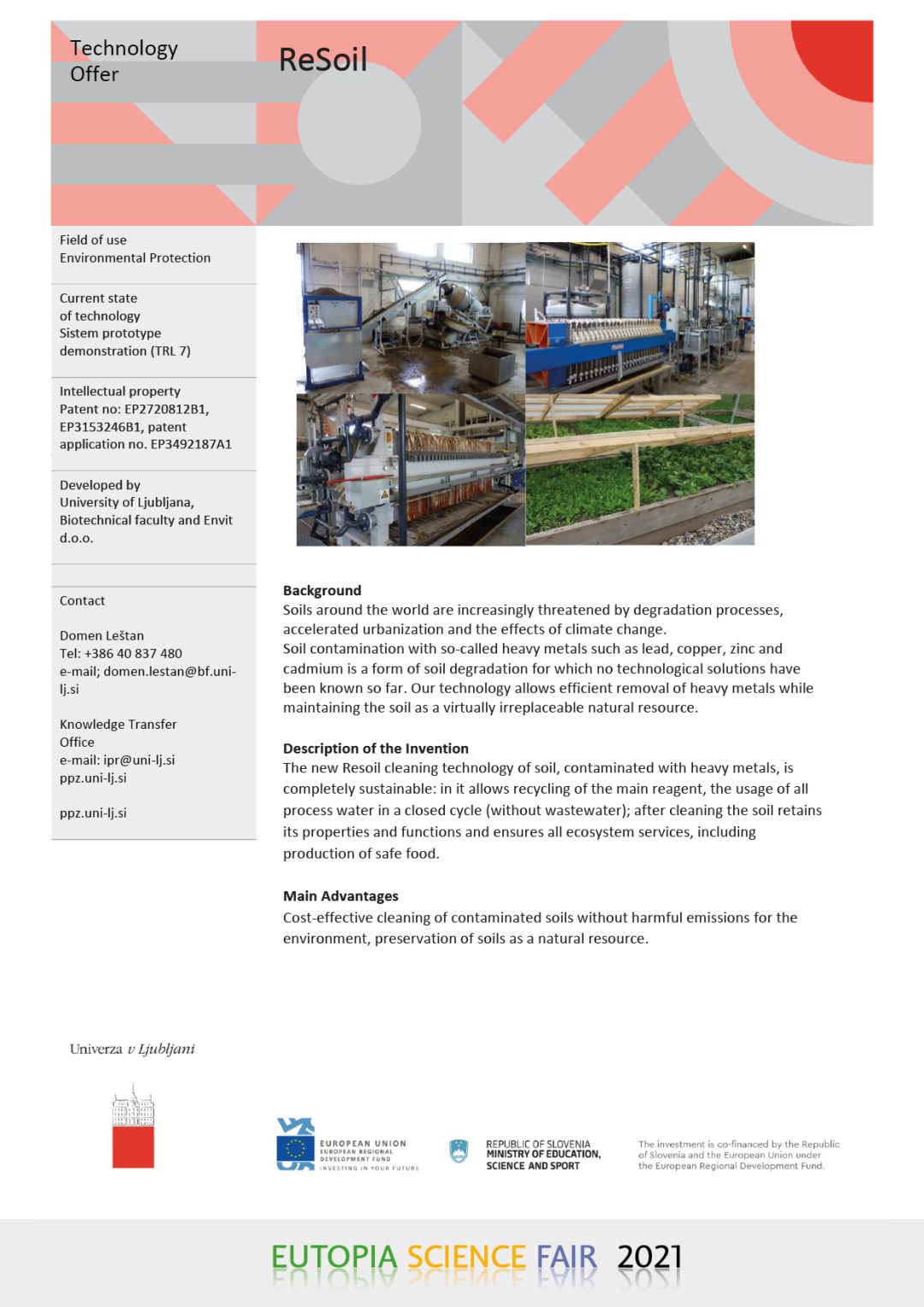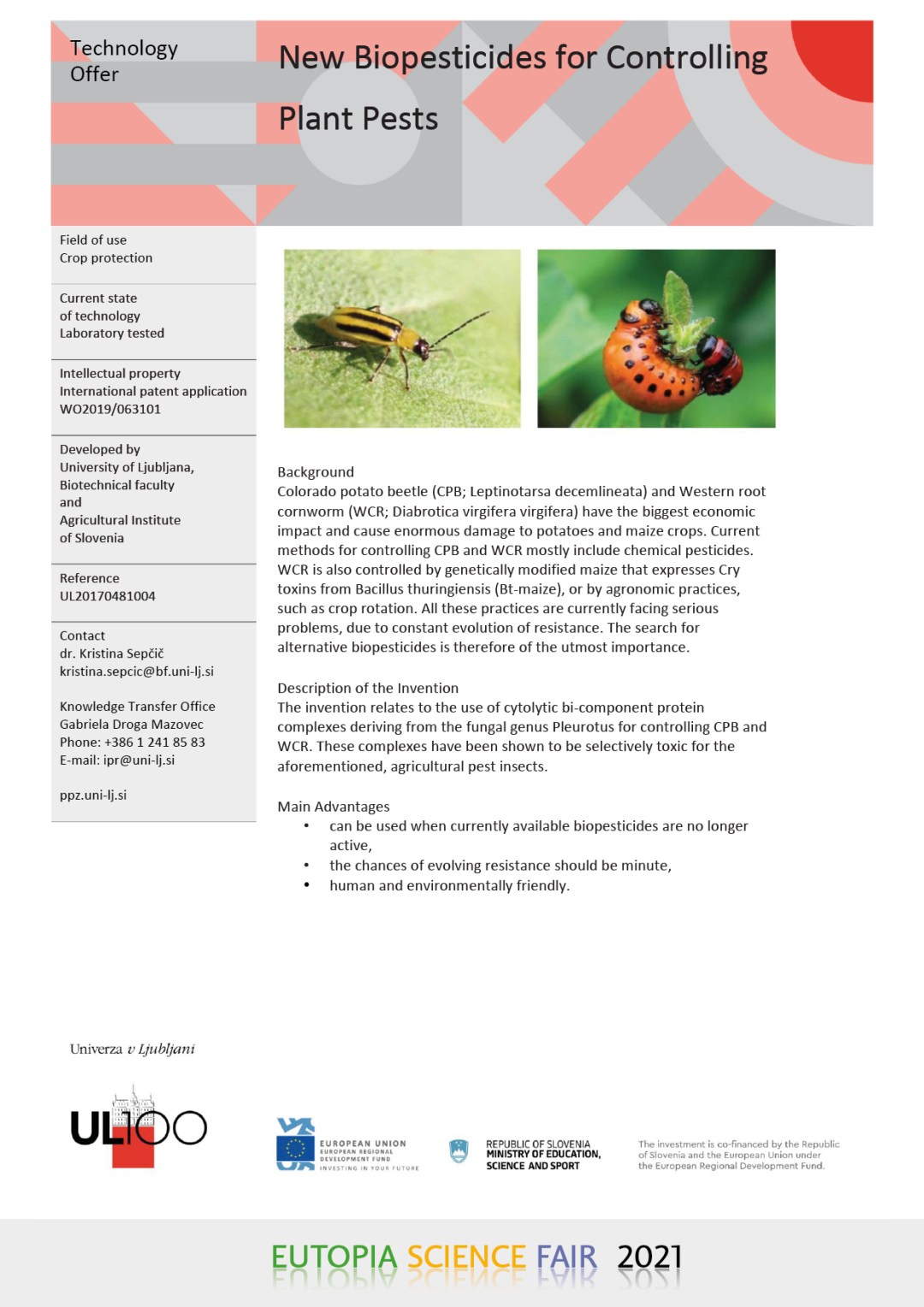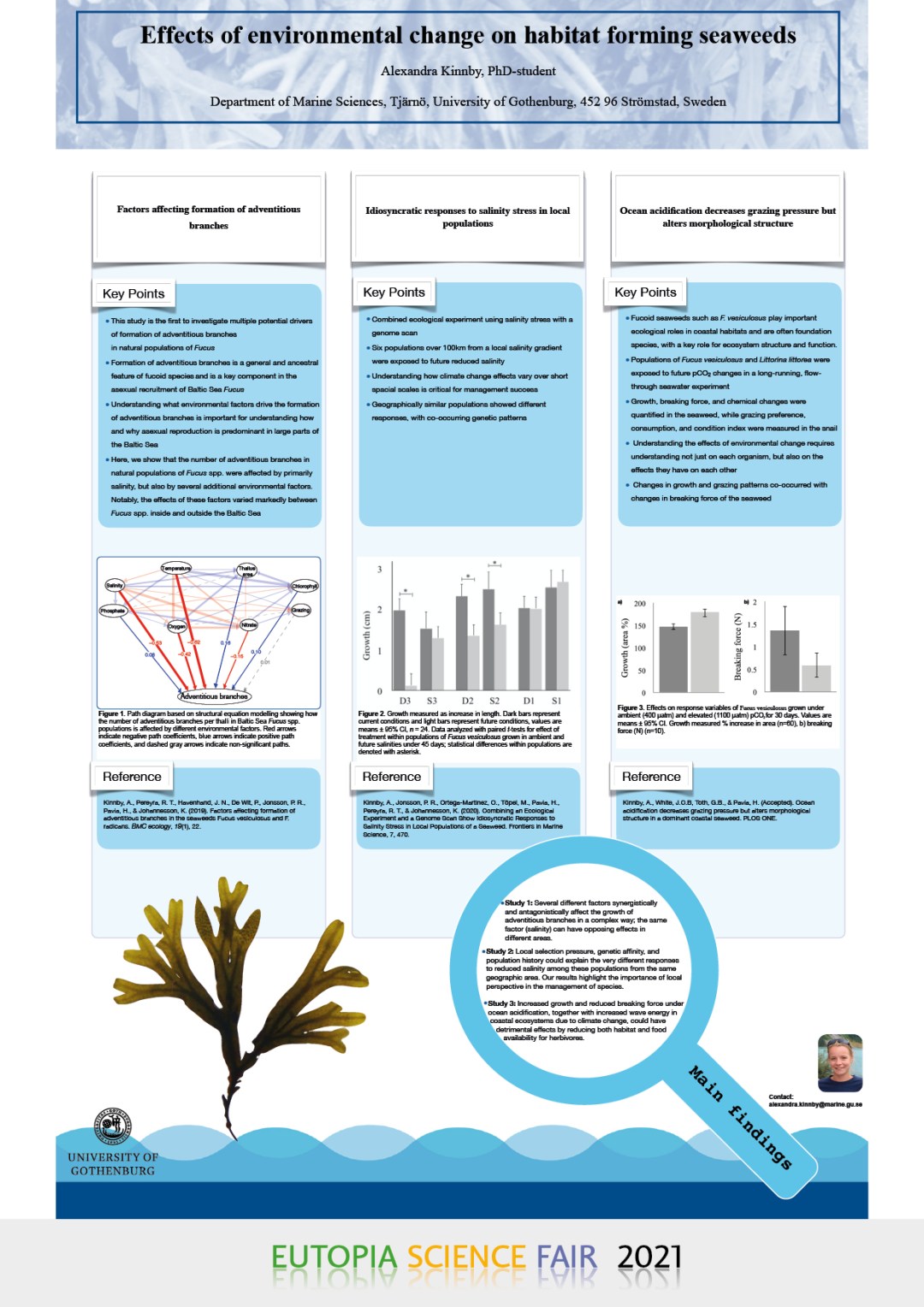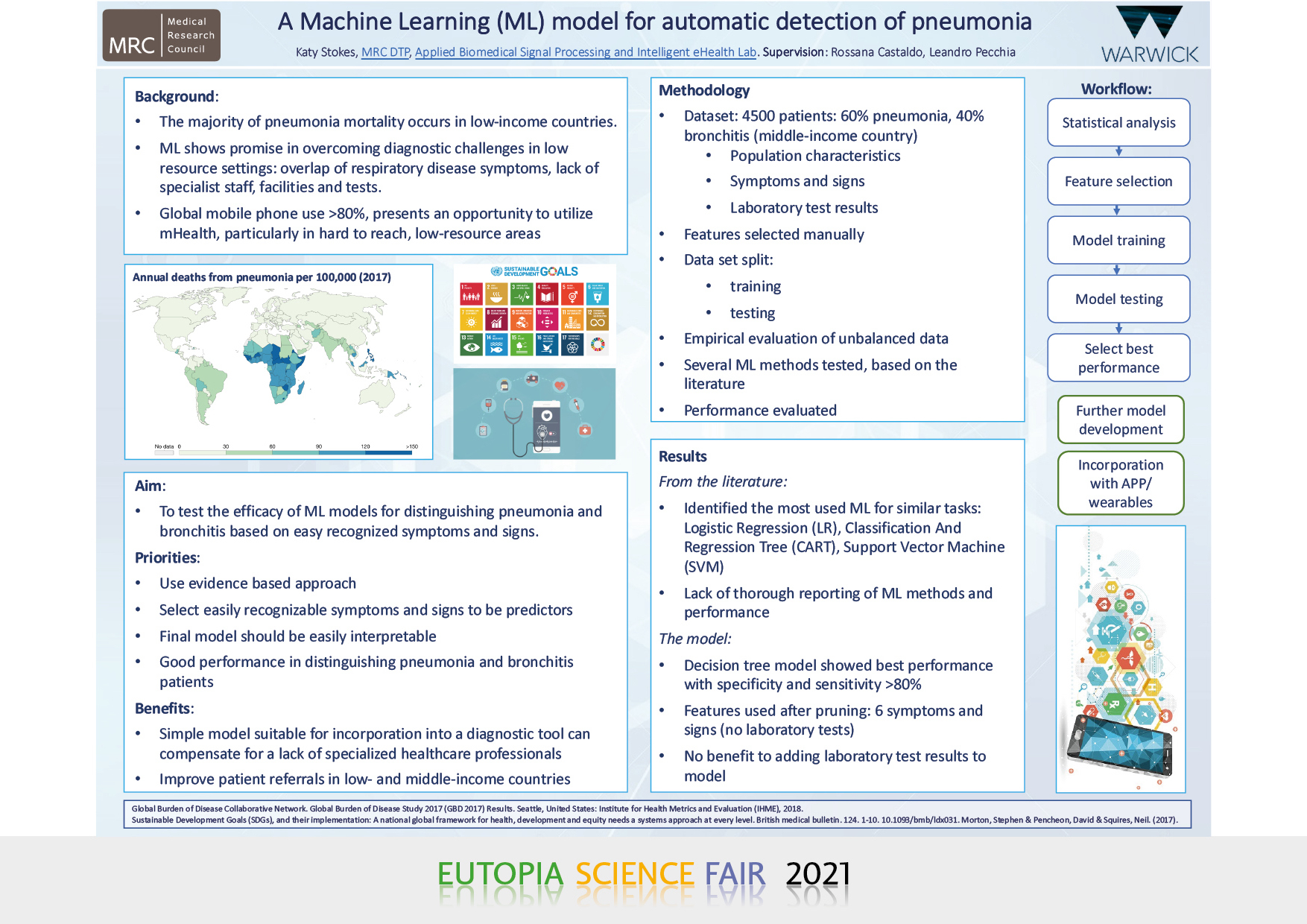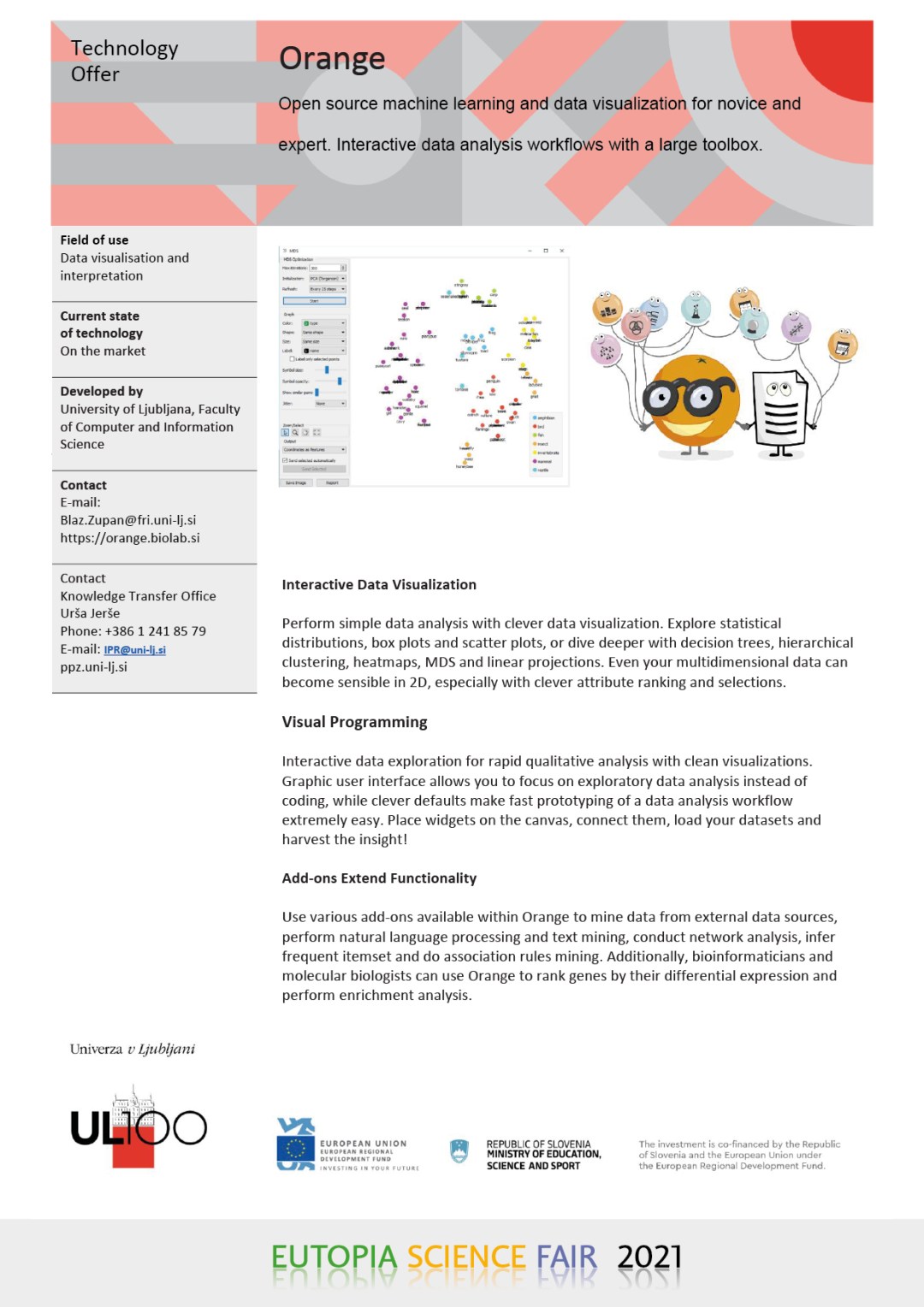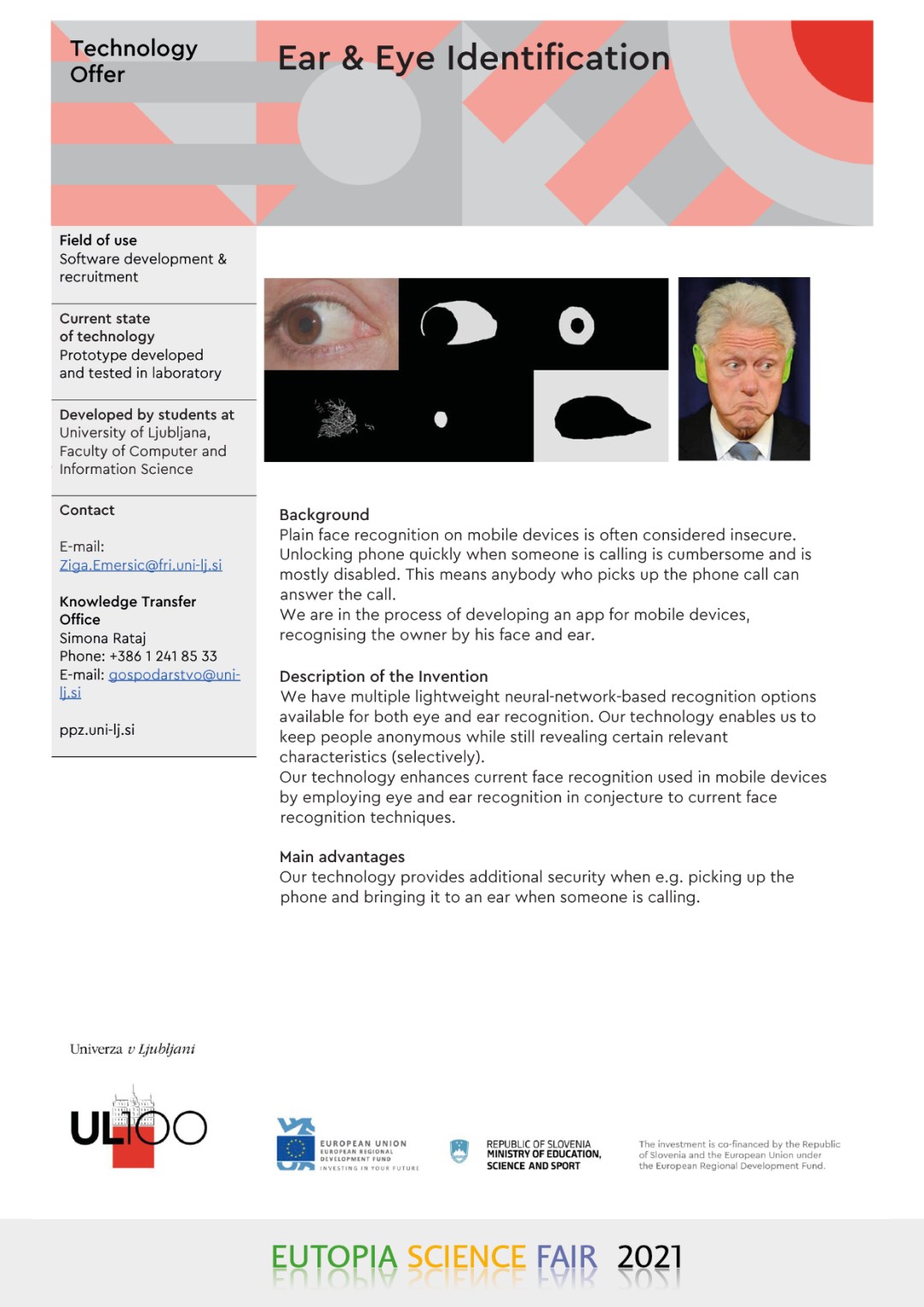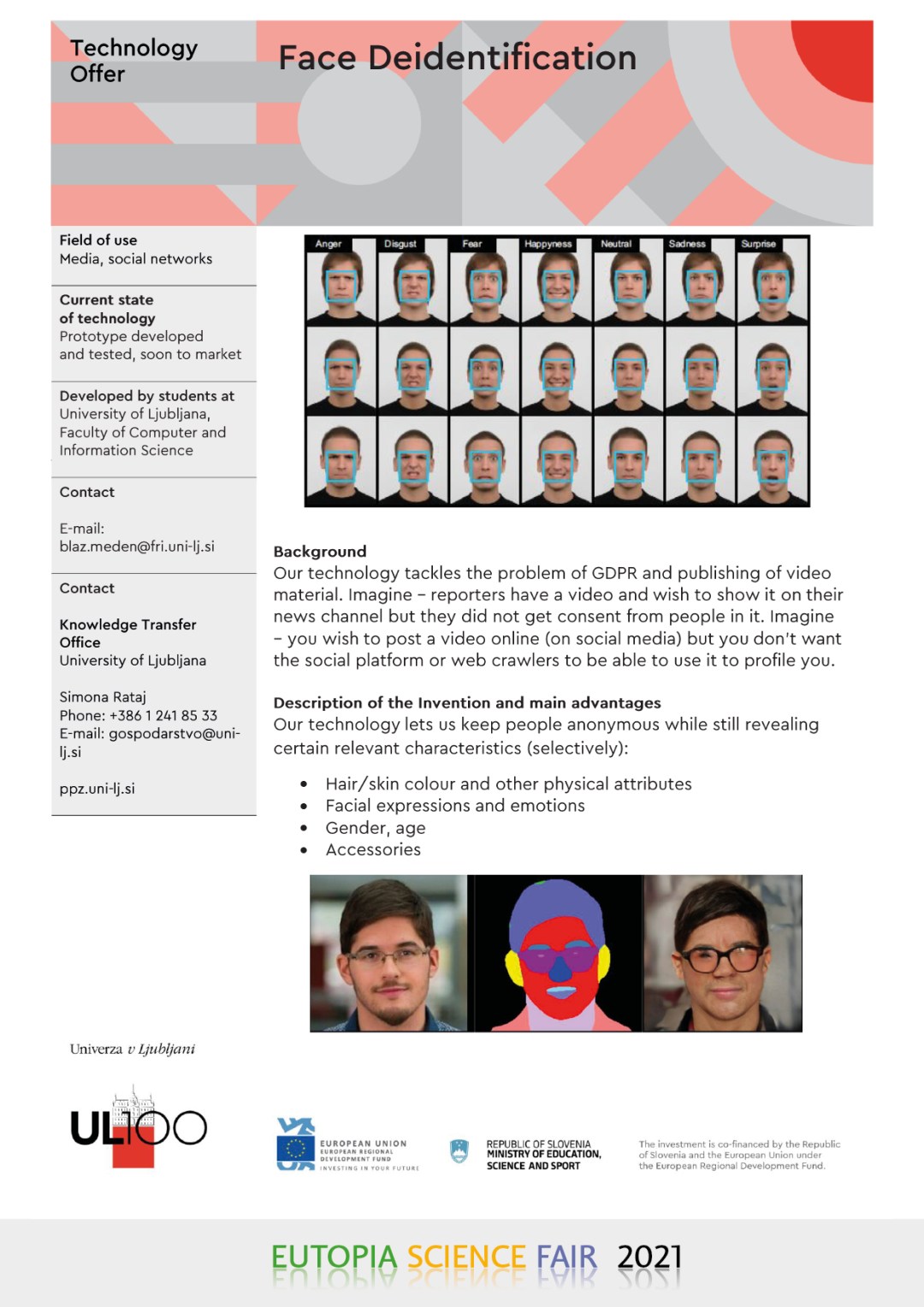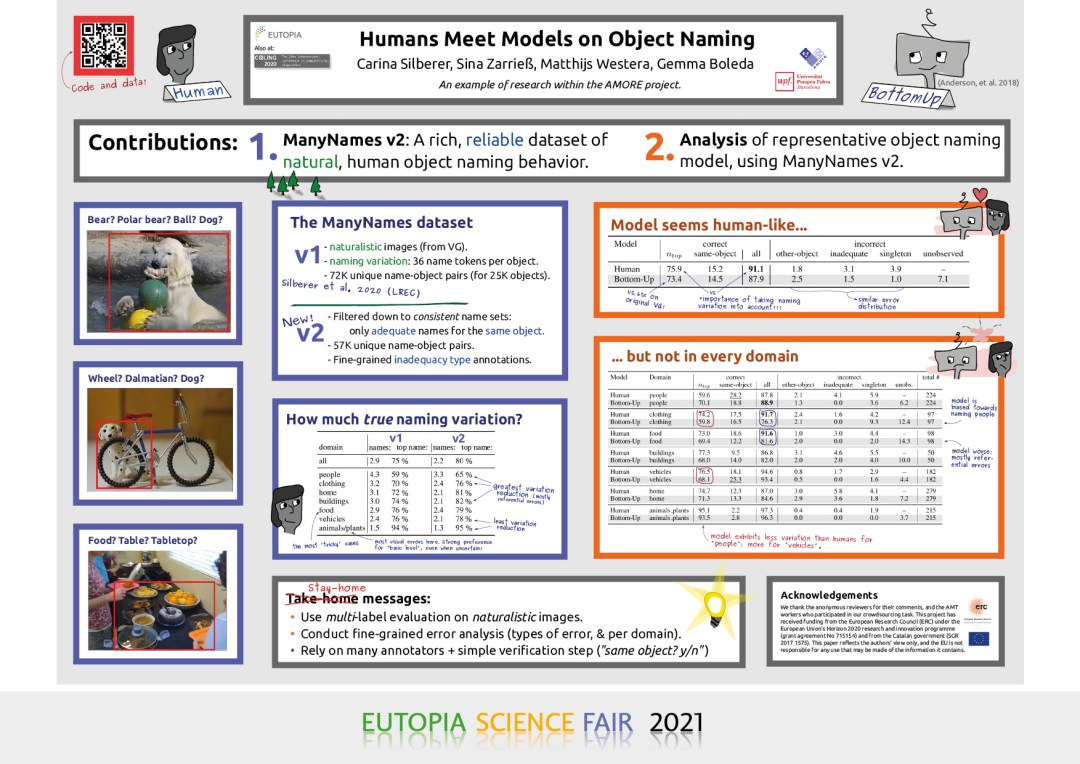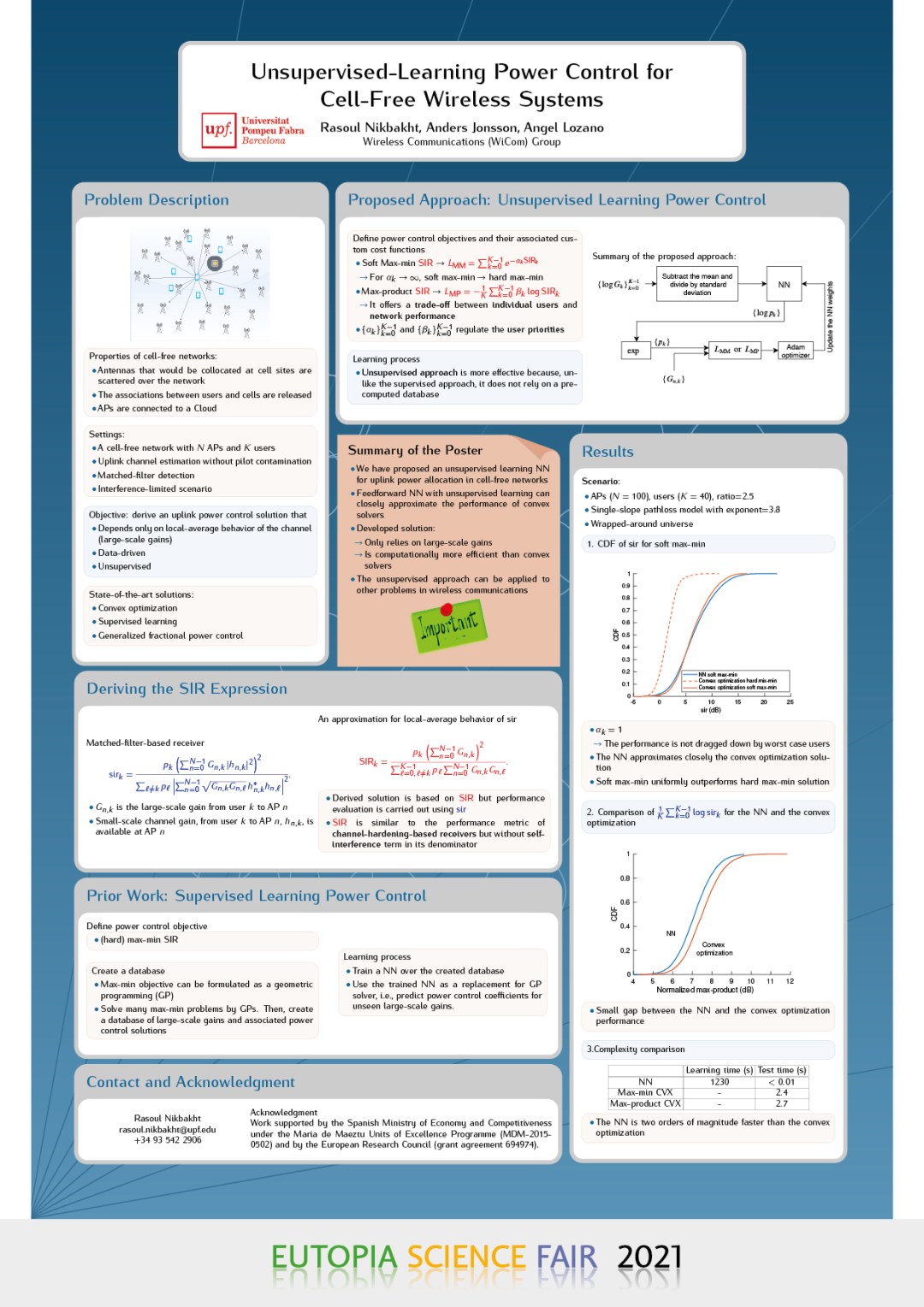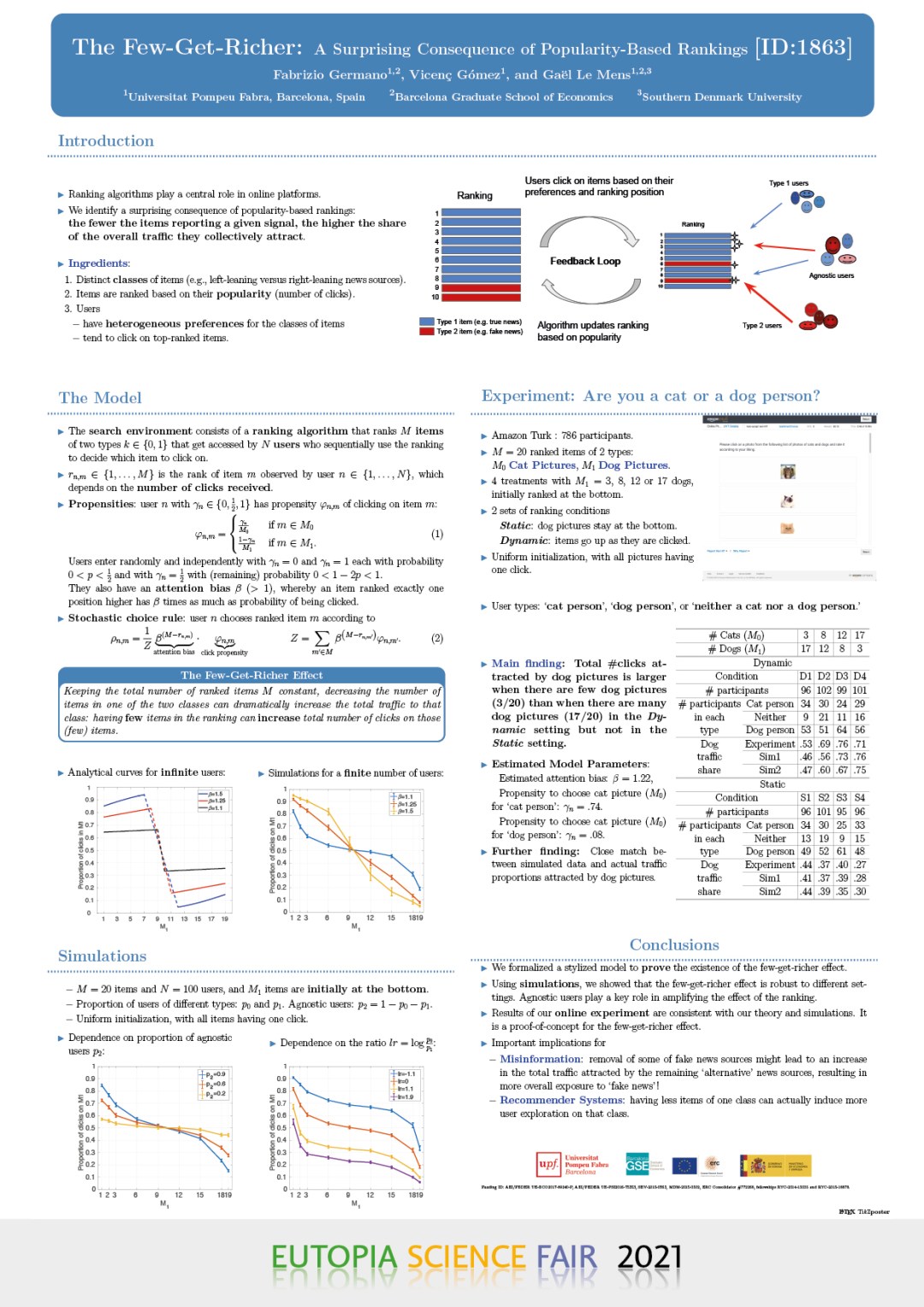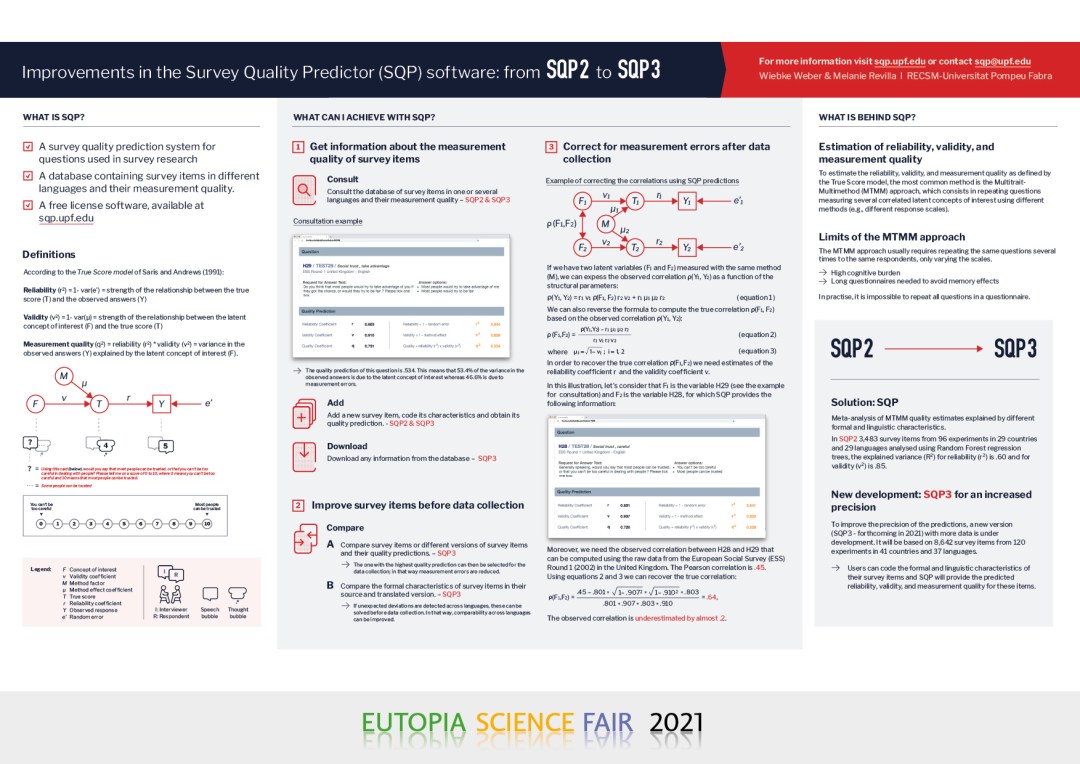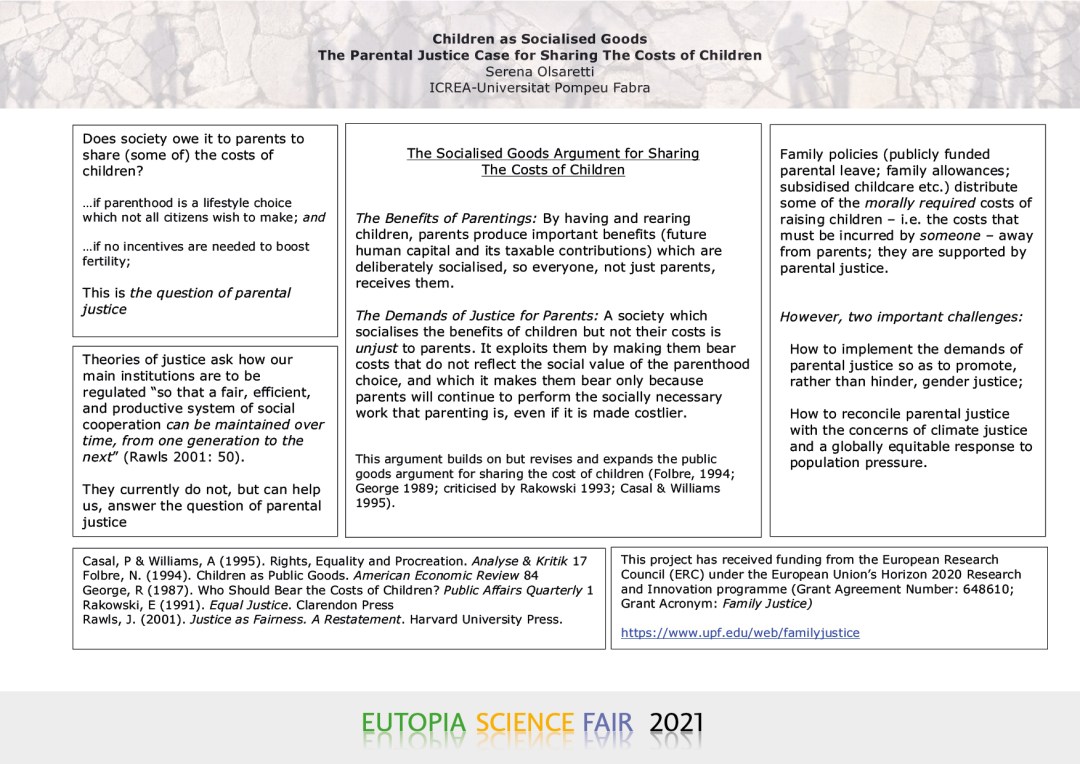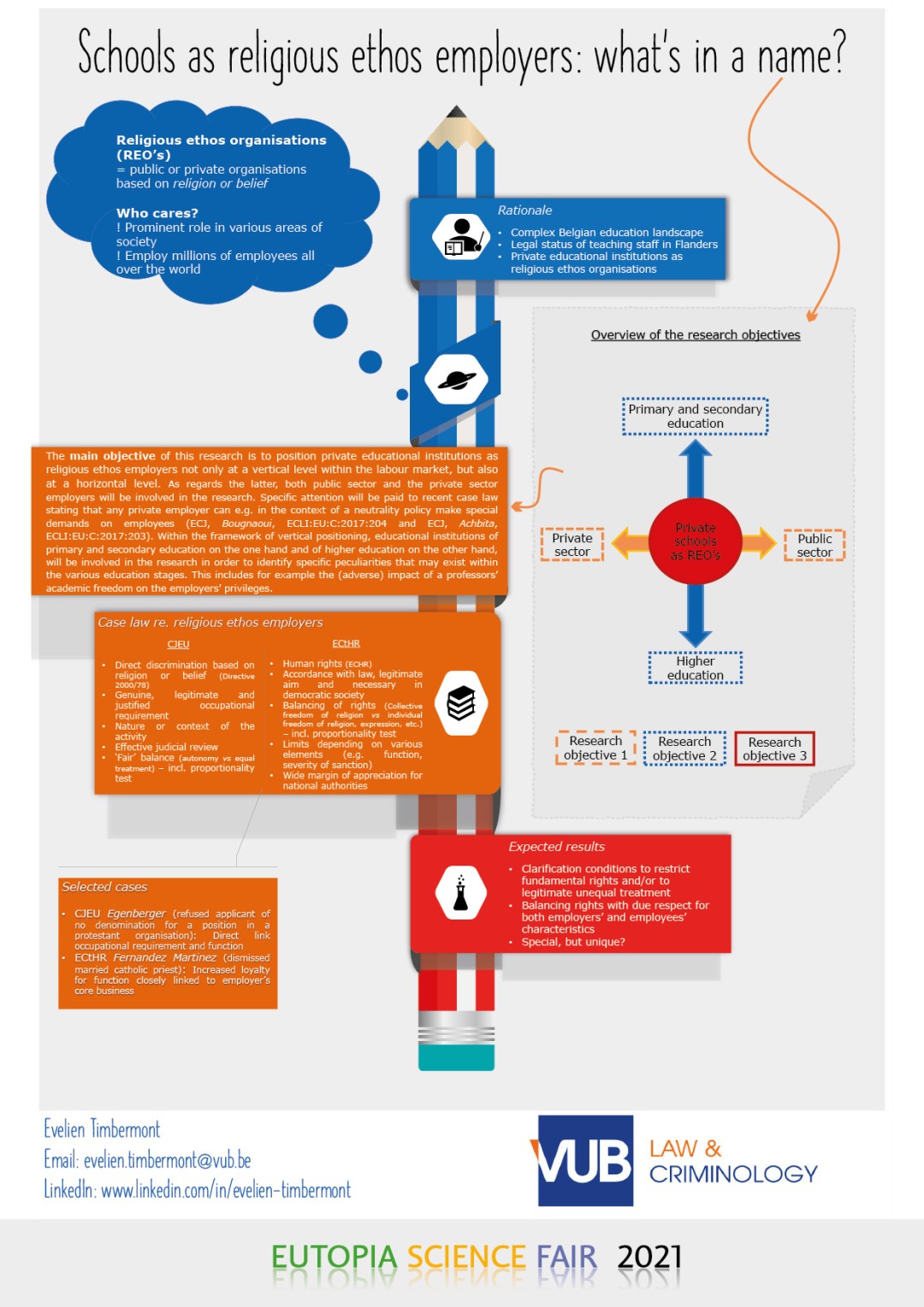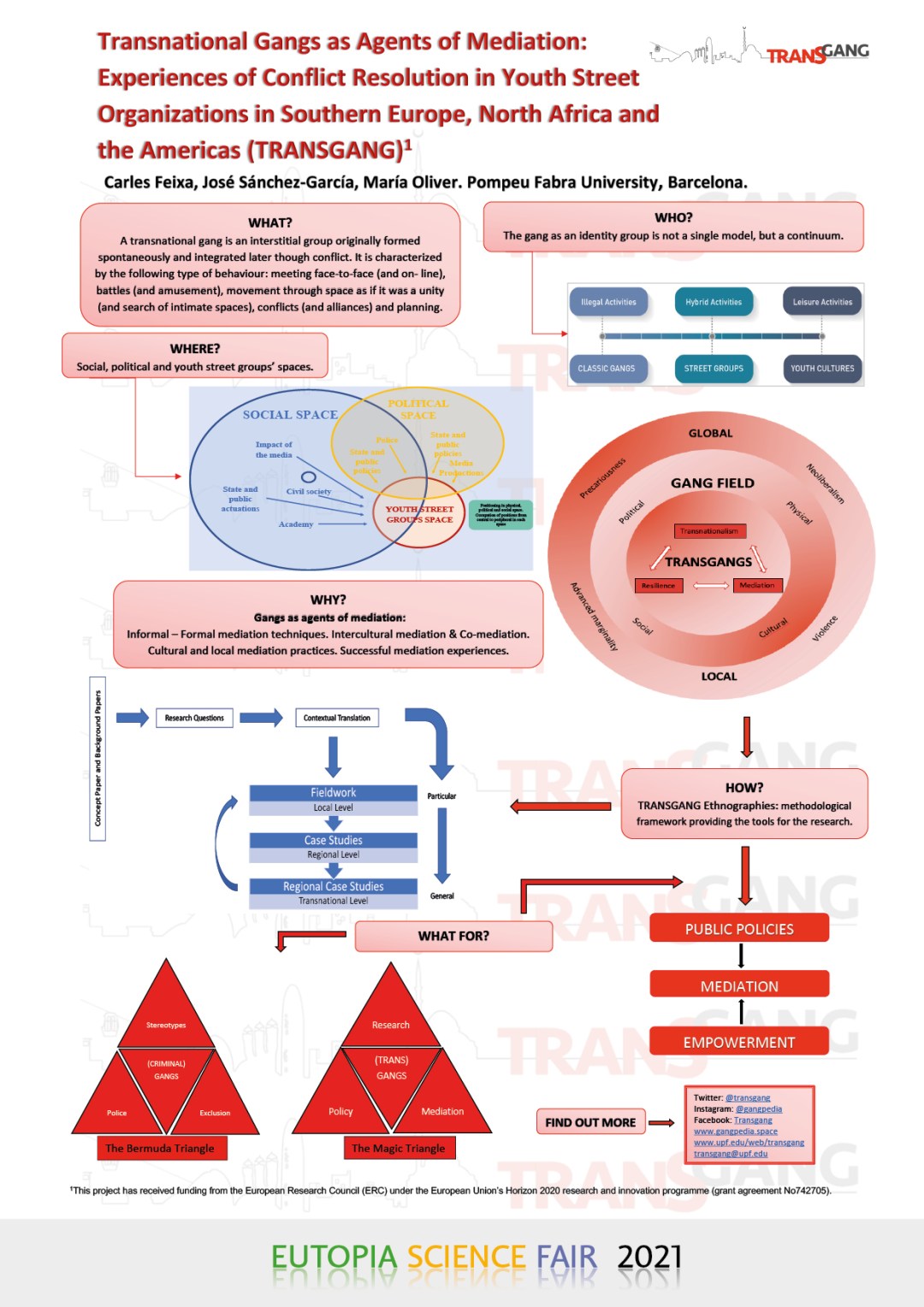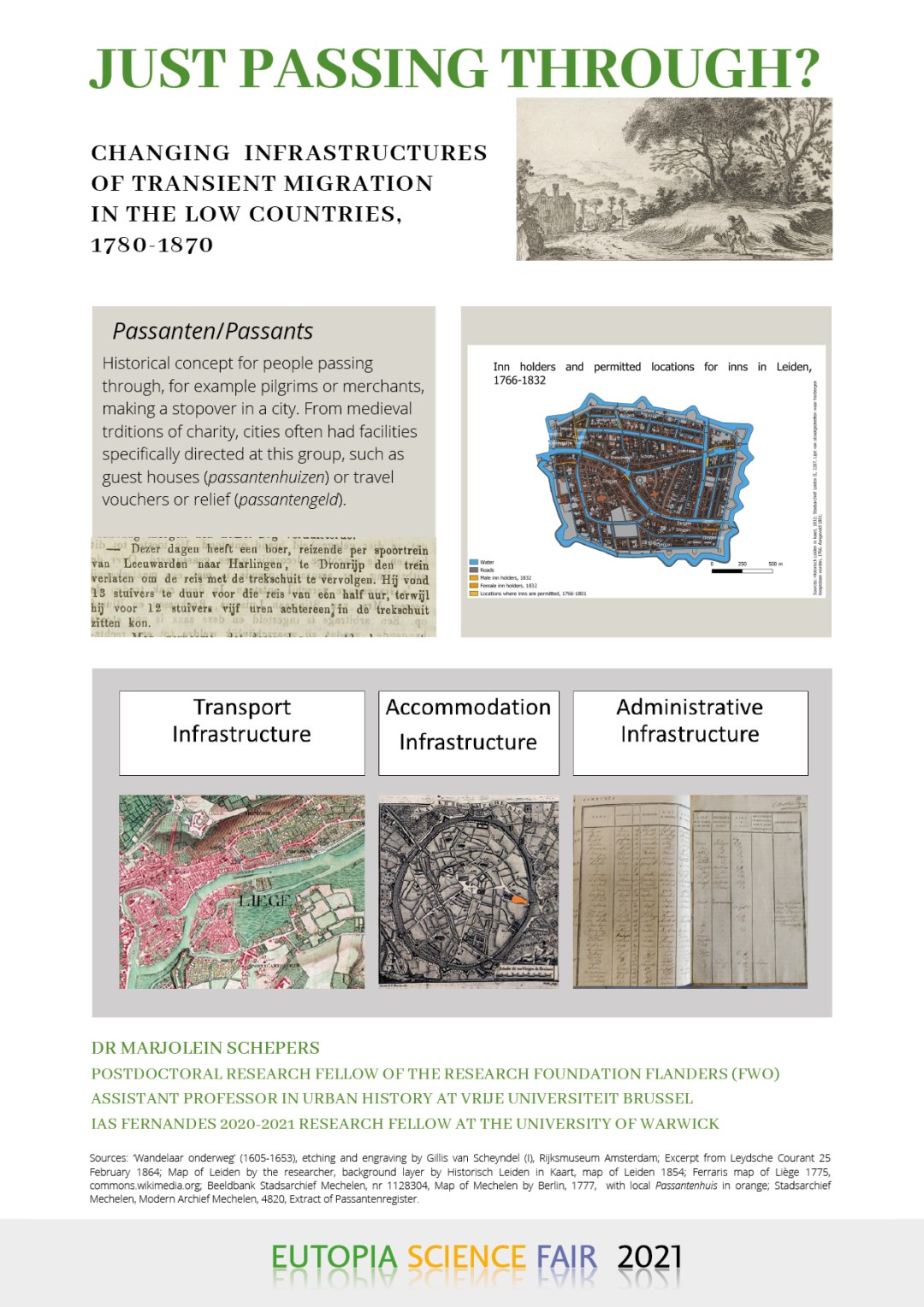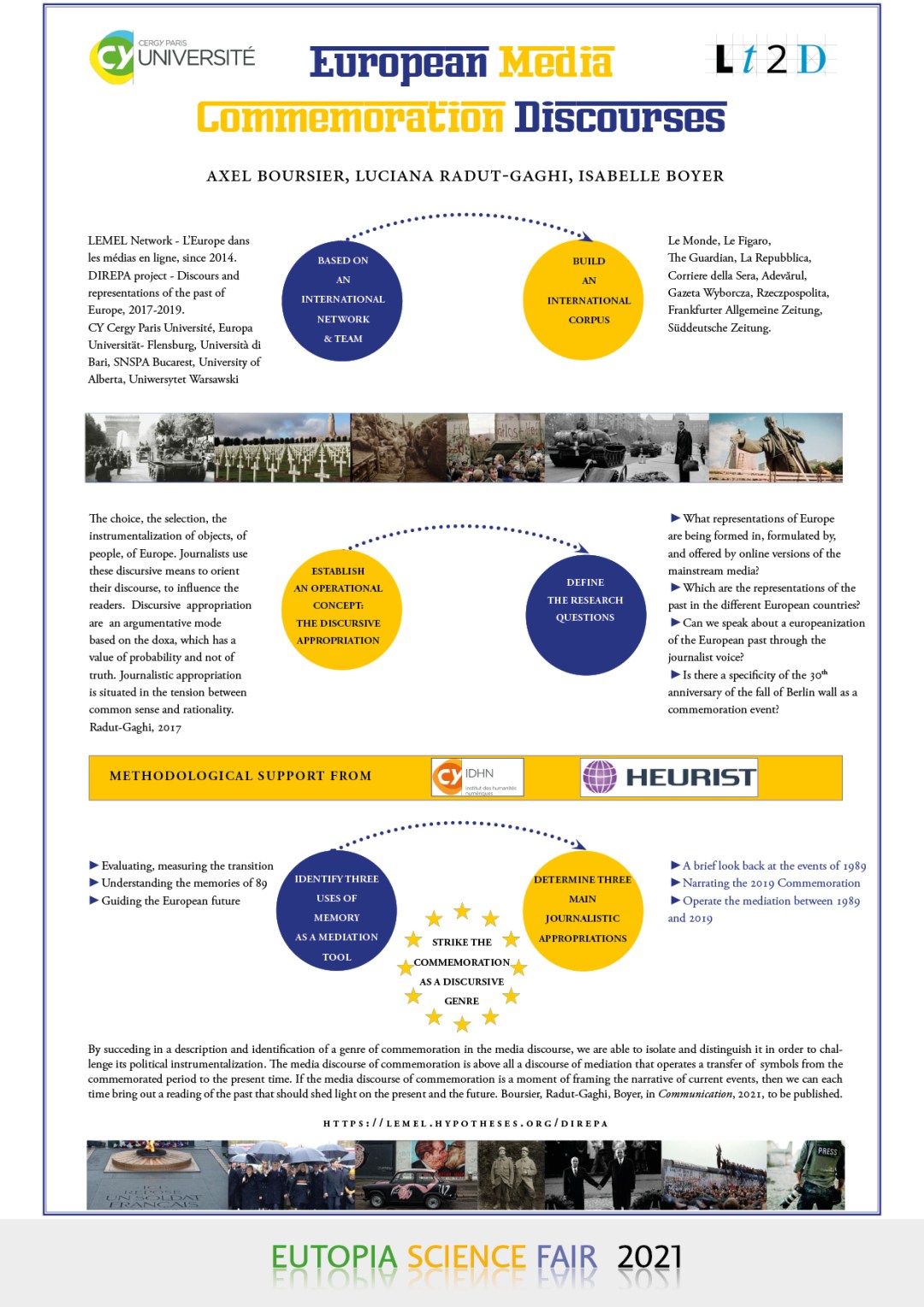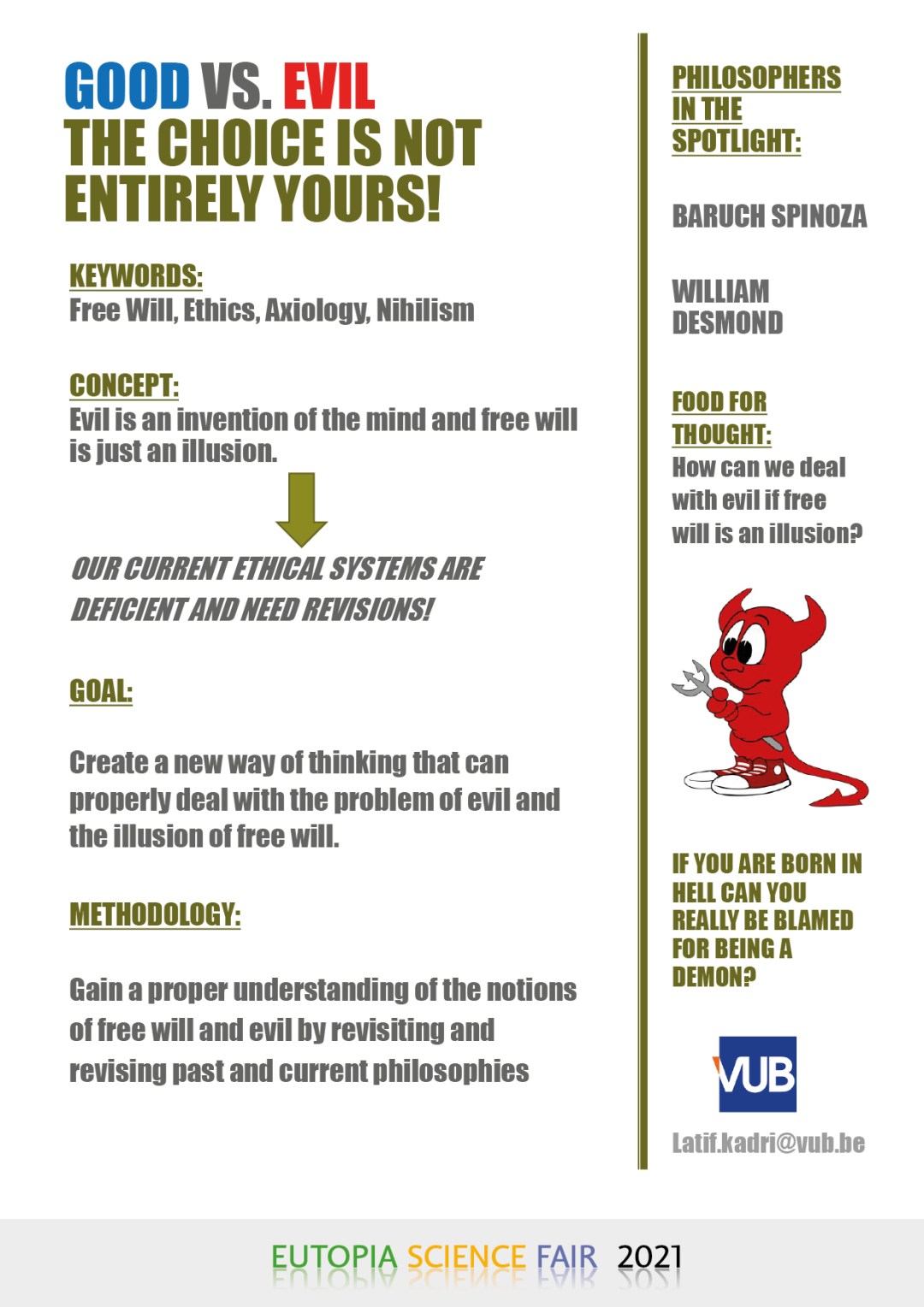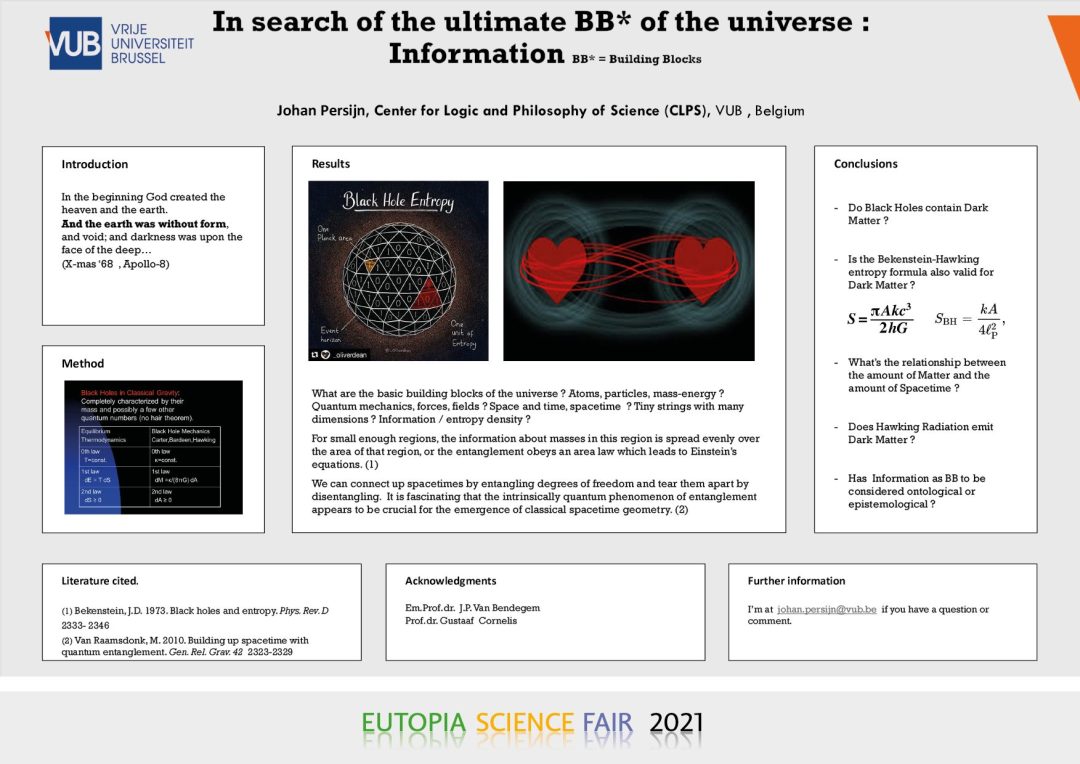You are here :
Science Fair 2021 ; Part 2

- 3. Environment and Climate Change
-
- P. Phattharapornjarnen et al., University of Gothenburg
-
Alternative Leadership in Flexible Surge Capacity — The Perceived Impact of the Tabletop Simulation Exercises on Thai Emergency Physicians Capability to Manage a Major Incident
- M. Volk, University of Ljubljana
-
Snapring: an everyday activity & personal safety app with seamless emergency features
- A. Van Heyst, Vrije Universiteit Brussel
-
Mineral oil in food: How is the situation in Belgium and what are the risks?
ANNELIES VAN HEYST
Vrije Universiteit Brussel, Science and Bio-engineering Sciences AMGCResearchers reported presence of mineral oil in various food. Mineral oil can enter the food via different routes: (i) certain mineral oils are allowed as additive (e.g. E905a), (ii) as a pollutant from atmospheric precipitation or aquatic pollution, (iii) due to processing of food (e.g. use of machine oils and anti-dusting products) and (iv) as a residue coming from ingredients from pesticides or components from printing inks on paper and board packaging.
In 2013, the European Food Safety Authority published a scientific opinion, thereby indicating that occurrence data onmineral oil are only available for a limited number of food groups and from few countries. In Belgium, data on the contamination of food by mineral oil were lacking. Another point of concern is that the potential health effects related to the contamination of the food chain by mineral oil are largely unknown.
Within this research, I evaluated the presence of mineral oil in food sold on the Belgian market and subsequently the exposure of the Belgian population. Afterwards, I investigated the hazards associated with mineral oil in terms of genotoxicity and endocrine activity. The data obtained within the project will be used to support the Belgian authorities in the implementation of new rules to minimize the exposure to mineral oil and prevent health issues caused by mineral oil.
This video was made in collaboration withScience Figured Out - C. Lancelotti, University of Pompeu Fabra
-
RAINDROPS – Resilience and Adaptation to Drylands: identifying past water management practises for drought-resistant crops
CARLA LANCELOTTI
CasEs Research Group, Department of Humanities, Universitat Pompeu FabraRAINDROPS aims to provide a long-term perspective on human adaptation to and the establishment of resilient cultivation systems in drylands. Drylands cover over 40% of the Earth’s surface and are home to approximately 2.3 billion people and in those areas either irrigation, a permanent water source or some form of rainwater harvesting techniques are often deemed necessary for cultivation. However, there are modern examples that testify to the existence of successful rain-fed cultivation systems, even in hyper-arid locations. Archeologically, the different levels of water management, and especially rain-fed cultivation, are extremely difficult to study, due to the lack of trustful proxies of these practices. Determining water availability directly from archaeobotanical material – specifically form ubiquitous and well-preserved micro-remains (phytoliths) – offers a potential solution to this problem.
The main objectives of RAINDROPS are: 1) to develop a methodology for identifying direct evidence of water management practice from crop remains; 2) to identify adaptive practices in drylands cultivation, with particular emphasis on rain-fed agriculture and drought resistant crops (i.e. finger millet and sorghum); and, 3) to establish past water management and land use practices at three biophysical hotspots in Asia and Africa. To reach its objectives, RAINDROPS combines research on plant physiology with original archaeobotanical applications and records of Traditional Ecological Knowledge (TEK) on cultivation systems in drylands. Plant remains from archaeological sites are the most direct evidence of ancient cultivation practices. RAINDROPS connects experimentally controlled data of macro-remains (stable carbon isotopes) and micro-remains (phytolith morphological ratios, and stable oxygen and silicon isotopes from phytoliths), with ethnographic evidence to create a methodological framework for the assessment of crop water availability. This approach is developed for three of the major tropical and sub-tropical crops, both in prehistory and today – pearl millet [Pennisetum glaucum (L.) R. Br.], finger millet [Eleusine coracana (L.) Gaertn.] and sorghum [Sorghum bicolor (L.) Moench] – and is applied to selected key archaeological settings (Harappa, Pakistan; Al Khiday, Sudan and Mezber, Ethiopia).
- C. Bailly et al., CY Cergy Paris Université
-
Enhancing the exploitation of sedimentary basins for the energy transition: From hydrocarbon resources production to geothermal heat generation
CÉDRIC BAILLY (1*), JEAN-BAPTISTE REGNET (1), PHILIPPE ROBION (1), SYLVIE BOURQUIN (2), XAVIER SENGELEN (1), CHRISTOPHE BARNES (1), RONAN HEBERT (1), BÉATRICE LEDESERT (1)
(1) Laboratoire Géosciences et Environnement Cergy, CY Cergy Paris University, France.
(2) Geosciences Rennes, UMR 6118 ; Université de Rennes 1, France.
Contact : cedric.bailly@cyu.frAs part of the energy transition, the geothermal potential of the Earth need to be studied in order to cope with climate change. In this context, the Horizon 2020 program is funding the MEET project to investigate the development of Enhanced Geothermal Systems in different geological settings, including sedimentary basins and the conversion of oil wells for geothermal purposes. Within this European project, we are investigating a Triassic reservoir made of sandstones and dolomites in order to evaluate the co-production potential of geothermal and oil resources.
Our study is intended to provide insights on the interrelations between rock physics properties and microstructures in a newly defined stratigraphic framework. The main objectives are focused on the geological controlling factors of the transport properties. The studied rocks were accumulated on the western part of the Paris basin during the Upper Triassic. Eight wells were characterized, combining sedimentary logging of 470 meters of rock cores and analyses of well-log dataset (Gamma Ray, Photoelectric absorption factor, Neutron Porosity, Density, Sonic). Lithofacies were defined based on core description, together with facies associations definition and depositional environment interpretation. Furthermore, a sampling of 159 plugs was done, for performing petrophysical analysis. Rock physics measurements were acquired on those plugs in order to complete an existing petrophysical dataset of more than 700 samples (permeability, κ and porosity, Φ). Furthermore, a petrographic work was conducted, including 250 thin-sections observations using conventional microscopy and 32 thin sections using cathodoluminescence.
Based on a systematic petrographic description, we show that the combination between sedimentary texture and diagenetic overprint may greatly impact the porous network of the studied rocks, conducting to the definition of 3 main rocks types displaying distinctive κ-Φ trends. Furthermore, using both sedimentary descriptions and well-log dataset, seven electrofacies corresponding to three main depositional environments were defined, namely alluvial fan deposits (conglomerates & sandstones), floodplain/lacustrine deposits (heterolytic clays) and dolomitic paleosols (dolomitization of siliciclastic deposits). Then, a high-resolution correlation transect was designed using genetic stratigraphy principles, including seven main genetic sequences that show the spatial evolution of depositional environments. In addition, the integration of rock types within the correlation transect provides a high resolution definition of the reservoir compartmentalization. To go further, we may build a 3D static geological model that will serve as a basis for the development of future numerical simulations of fluid flow and heat transfer at the scale of the reservoir.
- M. Dular, University of Ljubljana
-
Supercavitation, a method of water disinfection
- D. Leštan, University of Ljubljana
-
Resoil cleaning technology of soil contaminated with heavy metals
- K. Sepčič, University of Ljubljana
-
New biopesticides for Controlling Plant Pests
- A. Kinnby, University of Gothenburg
-
Effects of environmental change on habitat forming seaweeds
ALEXANDRA KINNBY, PHD-STUDENT
Department of Marine Sciences, Tjärnö, University of Gothenburg, 452 96 Strömstad, SwedenFucus vesiculosus is a habitat forming seaweed in the North Atlantic and Baltic Sea; any changes in its distribution or physical structure could have broad-reaching implications on many coastal ecosystems. It is therefore important to understand both how this important species has evolved in the past and adapted to historical changes in the environment but also how future environmental stress and changes will affect this species.
Salinity is one environmental factor that will be affected by climate change, increasing in some areas, but sharply decreasing in coastal regions. Within the Baltic Sea the sea surface salinity varies along a gradient from north to south and it therefore serves as a great model for studying effects of environmental changes. The reproduction of Fucus spp. is dependent on the local salinity. F. vesiculosus generally reproduces sexually, however in the Baltic Sea it has evolved clonal reproduction using adventitious branches which can detach from the parent and reattach nearby. Our results from structural equation modeling suggest that different factors interactively promote the growth of adventitious branches in a complex way, and that in some cases, the same factor (e.g. salinity) can have opposing effects in different areas.
In a separate study, the effects of changes in salinity were investigated by combining an experimental approach with a genome scan of six nearby F. vesiculosus populations from a natural salinity gradient. We analyzed the genetic differentiation among populations using thousands of genetic markers. The physiological tolerance to reduced salinity was evaluated by measuring growth, phlorotannin (defense compounds) content, and maximum photochemical yield in tissue of the same individuals exposed to both current and projected future salinities. Our results show that despite short geographic distances (max 100 km), most populations were genetically well separated. Furthermore, different populations responded very differently to a salinity decrease of four practical salinity units.
Another effect of climate change is ocean acidification due to increased atmospheric CO2, which might seriously affect coastal ecosystems. In addition to the direct effects on seaweeds, interactions between the seaweed and their consumers can be altered. We found an increase in surface area and decrease in breaking force which indicate that F. vesiculosus grown under elevated levels of pCO2 may have their tissue strength reduced. This, together with increased wave energy in coastal ecosystems due to climate change, could have detrimental effects by reducing both habitat and food availability for herbivores.
- K. Stedt et al., University of Gothenburg
-
Cultivation of Seaweeds in Industrial Process Waters – Evaluation of Growth and Nitrogen Content
KRISTOFFER STEDT (1), JOÃO PEDRO TRIGO (2), HENRIK PAVIA (1), GÖRAN NYLUND (1), BITA FORGHANI TARGHI (2) & INGRID UNDELAND (2)
(1) Department of Marine Sciences, University of Gothenburg, Sweden.
(2) Department of Biology and Biological Engineering – Food and Nutrition Science, Chalmers University of Technology, Gothenburg, Sweden
Elevated nutrient concentrations can increase both growth and protein content of different seaweeds. Nutrient-rich industrial process waters are untapped sources for seaweed cultivation. Cultivation of seaweeds in integration with fish farms have received much attention lately, but industrial process waters from other food industries have rarely been studied. Some focus has been on simulating process waters, without much attention on cultivation of seaweeds in real process waters, due to concerns that the complex characteristics of the waters will affect seaweeds negatively. Here we show that the seaweed species U. fenestrata, U. intestinalis and C. linum are suitable species for cultivation in a wide range of industrial process waters, while S. latissima is not. Growth rates of U. fenestrata, U. intestinalis and C. linum were similar or higher than the controls across the different process waters. All three species showed increased nitrogen content when cultivated in process waters compared to seawater. This study indicates the potential for cultivating seaweeds with industrial process waters to generate additional protein-rich biomass. The study shows that industrial process waters, otherwise costly disposed of, can be used as a valuable input for seaweed growth.
- 4. The Digital World and AI Applications
-
- K. Stokes, University of Warwick
-
A Machine Learning (ML) model for automatic detection of pneumonia
KATY STOKES
MRC DTP, Applied Biomedical Signal Processing and Intelligent eHealth Lab. SPneumonia has a devastating impact on health worldwide, but the majority of the burden falls in low- and middle-income countries (LMICs). In order to combat this, global access to early diagnosis and referral is key. Machine Learning (ML) is a tool that may be used to overcome certain diagnostic challenges such as a low specificity of symptoms, lack of accessible diagnostic tests and varied clinical presentation. Such models are also suitable for incorporation with phone apps or wearable sensors.
The aim of this study is to investigate the feasibility of an evidence-based and interpretable ML model, using symptoms and signs as features, for the purpose of distinguishing pneumonia and bronchitis patients.
Data from 4500 patients (1500 bronchitis, 3000 pneumonia) containing information on population characteristics, symptoms and laboratory test results was used to train and compare performance between three of the most common ML methods: logistic regression; decision tree and support vector machine. Manual feature selection was performed, such that the model would be built using 6 easily recognised symptoms. This selection was based on both relevance to pneumonia/bronchitis and prior use in similar models reported in the literature. Models were developed through a thorough hold out process of training, validation and testing.
The best performing model was found to be a decision tree, with a sensitivity and specificity of >80%. The tree-based model has the benefit of being easily interpretable, which grants advantages over previously reported ML models. Further, it is suitable for incorporation into a diagnostic tool, for the purpose of early diagnosis and treatment of pneumonia patients in low resource settings.
- B. Zupan, University of Ljubljana
-
ORANGE, Open source machine learning and data visualization for novice and expert. Interactive data analysis workflows with a large toolbox
- B. Meden, University of Ljubljana
-
Ear and Eye Identification, Z. Emersic + Face Deidentification
- C. Silberer et al., University of Pompeu Fabra
-
AMORE project: Humans meet Models on Object Naming
CARINA SILBERER, SINA ZARRIESS, MATTHIJS WESTERA,GEMMA BOLEDA
The AMORE project combines human data and computational modelling in order to understand how we use language to refer to entities in the world (things, animals, people). We give a concrete illustration of this approach by presenting an example of our recent research. Earlier, we collected a dataset we called ManyNames, by asking hundreds of people to provide names for objects in images, for a total of 25K images and 36 people per image.
This poster presents our subsequent work aimed at improving the quality of our data (by filtering out errors and noise) and using the resulting dataset, ManyNames version 2 (MN v2), to compare the object naming behavior of humans to that of current computational models. We analyze issues in the data collection method originally employed, standard in Language & Vision research, and find that the main source of noise in the data comes from simulating a naming context solely from an image with a target object marked with a bounding box, which causes subjects to sometimes disagree regarding which object is the target. We also find that both the degree of this uncertainty in the original data and the amount of true naming variation in MN v2 differs substantially across object domains (e.g., vehicles vs. people vs. animals). We use MN v2 to analyze a popular Language & Vision model and demonstrate its effectiveness on the task of object naming.
However, our fine-grained analysis reveals that what appears to be human-like model behavior is not stable across domains, e.g., the model confuses people and clothing objects much more frequently than humans do. We also find that standard evaluations underestimate the actual effectiveness of the naming model: on the single-label names of the original dataset (Visual Genome), it obtains 27% accuracy points less than on MN v2. Our work demonstrates the importance, for understanding language in humans as well as models of Language & Vision, of a dataset like MN v2 that does justice to the variation and nuance in natural, human behavioral data, as collected from a large pool of participants. [Gema Boleda]
- A. Lozano et al., University of Pompeu Fabra.
-
Unsupervised-Learning Power Control for Cell-Free Wireless Systems
ANGEL LOZANO RASOUL NIKBAKHT, ANDERS JONSSON
This work applies feedforward neural networks to the problem of centralized power allocation in the downlink of cell-free wireless systems with conjugate beamforming. The formulation relies only on large-scale channel gains. Most importantly, the learning is unsupervised, foregoing the taxing precomputation of training data that supervised learning would require. Two loss metrics are entertained, namely (i) the max-min of the user signal-to-interference ratios (SIRs), or more precisely a generalized form of max-min that can be softened at will to regulate the tradeoff between average performance and fairness, and (i) the max-product of the SIRs, which intrinsically effects such tradeoff. The results indicate that the unsupervised-learning approach can match the performance of vastly more computationally demanding methods.
Work supported by the Spanish Ministry of Economy and Competitiveness, under the Maria de Maeztu Units of Excellence Programme (MDM-2015-0502) and by the European Research Council (grant agreement 694974). - G. Le Mens et al., University of Pompeu Fabra
-
The Few-Get-Richer: A Surprising Consequence of Popularity-Based Rankings
GAËL LE MENS (1,2,3), FABRIZIO GERMANO (1,2), VICENÇ GÓMEZ (1)(1) Universitat Pompeu Fabra, Barcelona, Spain
(2) Barcelona Graduate School of Economics.
(3) Southern Denmark University
Ranking algorithms play a crucial role in online platforms ranging from search engines to recommender systems. In this paper, we identify a surprising consequence of popularity-based rankings: the fewer the items reporting a given signal, the higher the share of the overall traffic they collectively attract. This few-get-richer effect emerges in settings where there are few distinct classes of items (e.g., left-leaning news sources versus right-leaning news sources), and items are ranked based on their popularity.
We demonstrate analytically that the few-get-richer effect emerges when people tend to click on top-ranked items and have heterogeneous preferences for the classes of items. Using simulations, we analyze how the strength of the effect changes with assumptions about the setting and human behaviour. We also test our predictions experimentally in an online experiment with human participants. Our findings have important implications to understand the spread of misinformation.
- 5. Opinions and Society
-
- J. Longhi et al, CY Cergy Paris Université
-
The #Idéo2017 platform: analyzing political textual data in tweets during political campaigns
JULIEN LONGHI, N. HASSINE, C. MARINICA, B. BORZIC, A. ALKHOULI.
CY Cergy Paris Université Centre de Recherche AGORA (julien.longhi@cyu.fr)
The #Idéo2017 project, funded by the UCP Foundation, brings together researchers from the AGORA laboratory (EA 7392) and the ETIS laboratory (ENSEA / CY / CNRS UMR 8051), from CY Cergy Paris Université. It is a platform for analyzing political tweets during political campaigns. For the 2017 presidential election, he relies on all the tweets produced by the candidates’ accounts, with an update of the corpus every day. These tweets transcribe the various speeches throughout the campaign (meetings, debates, TV shows, etc.), so the analysis of these textual data gives rich and varied information on their speech. This tool is based on the corpus constitution methodology developed in a previous project (Polititweets corpus) and the implementation of textual statistics tools and data visualization. In parallel, the analyzes produced by researchers on concrete cases are posted on the platform in the “Analysis” section. The analyzes are performed using several languages and tools, including ElasticSearch to store tweets, Iramuteq scripts for some analyzes, distributed under the terms of the GNU GPL (v2) and ElasticUI for the development of the search engine.
- Melanie Revilla et al., University of Pompeu Fabra
-
Improvements in the Survey Quality Predictor (SQP) software: from SQP2 to SQP3
MELANIE REVILLA, WIEBKE WEBER
RECSM- Universitat Pompeu FabraThere is no measurement without errors. In particular, it is well-known that survey questions suffer from measurement errors. However, survey questions are used in a huge amount of research, across many different disciplines, from social sciences to health science. Nevertheless, most of this research ignores these measurement errors in the analyses. As a consequence, results can be biased. It is thus crucial to develop tools that provide information about the size of measurement errors for survey questions in a way that is accessible to most researchers.
This poster presents such a tool: the Survey Quality Predictor (SQP) software, a survey quality prediction system for questions used in survey research available for free at sqp.upf.edu. SQP is also a database of questions with measurement quality predictions, where measurement quality is defined in the frame of the True Score model (Saris and Andrews, 1991) as the variance in the observed answers explained by the latent concept of interest. Thus, measurement quality is the complement of measurement errors. Said differently, measurement errors = 1 – measurement quality. Measurement quality can be computed as the product of reliability and validity.
Using SQP, researchers can obtain a prediction of the reliability, validity, and measurement quality of survey questions, in different languages and countries. They can consult the database or add new questions of interest. Thus, SQP is a powerful tool both at the stage of questionnaire design (before data collection, in order to improve the questions forms) and at the stage of analysis (after data collection, in order to correct for measurement errors). SQP can also be used to compare the source and translated versions and avoid non necessary deviations in translations when doing cross-cultural research.
The poster also explains what is behind SQP (meta-analysis of thousands of reliability and validity coefficients estimated through Multitrait-Multimethod experiments) and the improvements expected in the forthcoming SQP 3 version compared to the existing SQP 2 version.
- S. Olsaretti, University of Pompeu Fabra
-
Children as Socialised Goods The Parental Justice Case for Sharing the Costs of Children
SERENA OLSARETTI
ICREA-Universitat Pompeu FabraA central question in the normative debate over the welfare state concerns the fair division of the costs of child-rearing between taxpayers and the family. The question at issue is whether families ought to meet a greater share of the costs of child-rearing than they currently do in welfare states, assuming they are able to do so, or whether justice to parents supports generous family policies such as publicly funded parental leave, childcare and child-tax credit. This question is of practical and theoretical significance. Practically, it is important to justify these policies in the face of a “backlash” against them (e.g. Burkett 2000). Theoretically, the justification of these policies meets with difficulties, because while many welfare state policies do not benefit all taxpayers equally, this is typically in order to cater for needs people are not responsible for having (as in the case of most medical needs or involuntary unemployment). By contrast, it seems harder to justify policies which are paid for by all citizens but benefit only some of them as a result of life-plans which only some citizens embrace (not everyone values parenting), and which people can choose whether or not to pursue (parents generally choose to have children). Family policies thus seem to be under pressure from what political philosophers refer to as the challenges of personal responsibility and neutrality and (see Rakowski 1993; Casal and Williams, 1995).
My research aims to construct a case for supporting family policies that can meet these challenges. The central claim it defends is that some of the benefits parents produce by having and rearing children (the demographic renewal and human capital formation needed for maintaining the welfare state) are deliberately socialised; and that a society which socialises the benefits of children but not their costs is unjust to parents. It exploits them by making them bear costs that do not reflect the social value of the parenthood choice, and which it makes them bear only because parents will continue to perform the socially necessary work that parenting is, even if it is made costlier. This socialised goods argument for family policies draws on and revises the idea that children are public goods defended by Nancy Folbre (1994) and Rolf George (1987); it is shown to avoids critiques raised against the latter (Rakowski 1991; Casal & Williams 1995) and to be an important component of a plausible theory of justice.
Works cited
Burkett, E (2000). The Baby Boon. How Family-Friendly America Cheats the Childless. Free Press Casal, P & Williams, A (1995). Rights, Equality and Procreation. Analyse & Kritik 17 Folbre, N. (1994). Children as Public Goods. American Economic Review 84 George, R (1987). Who Should Bear the Costs of Children? Public Affairs Quarterly 1 Rakowski, E (1991). Equal Justice. Clarendon Press
- K. Kreamer Fults, Vrije Universiteit Brussel
-
Life is a journey: residential location and a child’s daily independent travel in Belgium
KANDICE KREAMER FULTSCosmopolis Centre for Urban Research, Department of Geography, Vrije Universiteit Brussel, Belgium. E-mail: kandice.kreamer.fults@vub.be
Where children grow up has a large impact on how they travel and recreate in their youth. Inequalities in daily household travel choices exist across all types of residential locations, and surprisingly, begin at the earliest stage of life. Children have more independent mobility, or the ability to travel without an adult, in very urban locations and less independent mobility in suburban areas, where the amount of household automobile trips is the highest. Gender inequality also begins at young age for independence- female children are much less likely to make independent trips regardless of where they live.
We base our study on the most recent and comprehensive household daily travel survey data from Belgium collected over 2010 (Beldam survey). Using these data, we analyse the influential factors in independent travel for children aged 6-17 years old, including not only sociodemographic factors, but residential location, as well. We utilise generalised linear models to describe the effect of residential location on the level of independent travel for children, while controlling for well-established socioeconomic influences, such as gender and age.
The results show that, in Belgium, the fewest number of daily automobile trip for children are undertaken in the agglomeration, or urban city centres; while the highest amount of daily automobile trips are undertaken by residents of the commuter zone. Intuitively, the results also show that daily automobile trips for children increase as automobile accessibility increases. Independent travel for children in Belgium is higher for male children than their female counterparts and independent travel increases with age for all children.
Because automobile use has a taxing and harmful effect on the regional environment in terms of air quality and land usage, and children’s physical activity and mobility is steadily declining, it is a reasonable and socially responsible goal to aim to decrease children’s travel by automobile. Independent mobility is important for children, as it is necessarily done without an automobile because they cannot drive and typically increases their physical activity through walking or cycling. These results show there is more to consider than automobile usage and perceived convenience when living in a suburban area, there is also the amount of independence and physical activity a child experiences in personal travel.
This video was made in collaboration with Science Figured Out - E. Timbermont, Vrije Universiteit Brussel
-
Exploring the limits of religious ethos employers with regard to their employment policy
EVELIEN TIMBERMONT
Vrije Universiteit BrusselThis research focuses on so-called ‘religious ethos organisations’ (Tendenzbetrieb in German or Entreprise de tendance in French) in their capacity as employer.
Religious ethos organisations are based on religion or belief. Some examples are Jewish educational institutions or Catholic hospitals. It is assumed that, compared to other employers, these organisations have a far-reaching opportunity to shape their personnel policy. Thus, they can under certain conditions restrict the fundamental rights of their (future) employees and/or treat them unequally based on their religion or belief.
The analysis is part of a broader study concerning the position of Flemish private educational institutions in their capacity as religious ethos employers. Despite this more comprehensive scope, the research will also be relevant to other countries of the European Union and even worldwide as religious ethos employers occur in many countries. Moreover, the research has a major European component as it addresses the regulatory framework on fundamental rights and equal treatment. In this respect, the relevant provisions of the European Convention on Human Rights and the case law of the European Court of Human Rights on the one hand, and of the Directive 2000/78/EC and the case law of the Court of Justice of the European Union (ECJ) on the other hand, will be analysed. As the ECJ has recently ruled for the first time on this topic, a unique opportunity emerges.
It is expected that this research will clarify the possible restrictions that religious ethos employers may impose on e.g. theprivate life or the right to freedom of expression of their (future) employees. And, moreover, the extent to which these employers may treat their (future) personnel differently by imposing specific requirements that are linked to religion or belief.
As institutions based on religion or belief are omnipresent and often play a prominent role in various areas of society, this research has a major impact both from a societal as a scientific point of view. The research will lead to the development of new insights on the relation between European and international law, but also on the relationship between labour law and fundamental rights and/or non-discrimination law and, in a broader sense, the relation between state and religion.
This video was made in collaboration with Science Figured Out - C. Feixa et al., University of Pompeu Fabra
-
TRANSGANG. Transnational Gangs as Agents of Mediation: Experiences of Conflict Resolution in Street Youth Organizations in Southern Europe, North Africa and the Americas
CARLES FEIXA, JOSE SÁNCHEZ-GARCÍA AND MARÍA OLIVER
Pompeu Fabra University, BarcelonaTRANSGANG’s precept is the study of transnational gangs as mediation agents. It aims to respond to the persistence of street youth groups (the so-called ‘gangs’) being seen as ‘problematic’. The central focus of the project is mediation, understood as the set of techniques and procedures for resolving conflicts within the group, between groups, or between the groups and the social environment. Most research studies and policies that deal with gangs are based on the idea that the solution is the suppression of the group. Our perspective is different: studies carried out for more than a century show that gangs do not disappear, but rather transform to continue responding to unmet needs. Therefore, we understand that the way forward means involving gang members themselves in the search for alternatives to violence, based on a harm reduction policy and the promotion of mediation experiences. Young people who have belonged or belong to street youth groups are currently collaborating with the project. Their life stories are examples of resistance and resilience, two types of experiences that we are studying: how to survive in conditions of social exclusion and how to react to adversity with the help of the group.
To research Youth Street Groups, we developed a transnational methodology based on a comparative study in 12 cities in 3 different regions: southern Europe (Barcelona, Madrid, Marseille and Milano), the Maghreb (Casablanca, Djendel, Alger and Tunis) and the Americas (Medellín, San Salvador, Santiago de Cuba and Chicago). Ethnographic work will be carried out in each city, involving interviews, focus groups, participant observation and life stories with members, former members and stakeholders. This project is important for society for three main reasons. First, it responds to a problem that causes social alarm based on a biased view of reality. Second, the transnational dimension of gangs requires developing innovative methodologies for studying them. Third, learning about and sharing successful mediation experiences in different places can be used to rethink public policies aimed at addressing the phenomenon. Therefore, we consider that TRANSGANG will provide a new look at social problems that are difficult to tackle, empowering the young participants, making the protagonists of the problem part of the solution by incorporating them from the beginning as agents of the research.
www.upf.edu/web/transgang. CONTACT: transgang@upf.edu - M. Schepers, Vrije Universiteit Brussel
-
Just Passing Through? Urban Infrastructures of Transit Migration in the Low Countries, 1780-1870
MARJOLEIN SCHEPERS
Postdoctoral Research Fellow of the Research Foundation Flanders (FWO) Assistant Professor in Urban History at Vrije Universiteit Brussel. IAS Fernandes 2020-2021 Research Fellow at the University of WarwickMigration historians have demonstrated how migration entailed more than movement from A to B, but have had difficulties getting a grasp on all aspects of mobility. Especially quantification and the analysis of changesin patterns over time have proved difficult. This project proposes to approach migration from a transit perspective, focusing on migrants en route. The spatial and qualitative approach on transit migration infrastructure challenges and provides new insights to existing categorisations (defining migrants from more temporary to more permanent) as well as the predominant binary focus on the origin and host societies.
Transit infrastructure is interpreted here as the transport and accommodation structures facilitating migration as well as the administrative scaffolding within which this took place. Focusing on the changes between 1780 and 1870 by means of case studies on Leiden (water), Mechelen (rail) and Liège (road), this project analyses to what extent, how and why transit migration infrastructures changed. It scrutinises the supposed increased state and business intervention in mobility, as well as the continuity and discontinuity between the early modern period and the nineteenth century.
Using GIS mapping methods, this project combines crucial debates of migration, travel and transport history and combines them in a new research agenda.
- A. Boursier et al., CY Cergy Paris Université
-
The media discourse of commemoration
AXEL BOURSIER, LUCIANA RADUT-GAGHI, ISABELLE BOYER
CY Cergy Paris Université, Lt2DThere are at least three ways in which media are involved in the commemoration exercise:
By recalling historical facts through archives or testimonials By reporting on actions organized by public or private institutions with the same commemorative objectives Through the commemorative speeches by which actors question a reading of the present, or even the future, in connection with events produced as “founders”. The commemoration would then be a place to read the present, current events and economic issues.Our research questions the discourse of commemoration as a place for the production of meaning.
A production is proper to the event of commemoration.
It is the place where other events are framed. The narrative of commemoration is a framing narrative that allows a return to oneself that should ensure the closure of the narrative of current events and give them a plot and a theme. We wish to understand the weight of the journalistic narrative in this reconfiguration of the event.
The status of the memorial event.
We are dealing with a framing narrative that takes place during the commemoration. We hypothesize that commemoration is a discursive “genre”. More than a repetition, it is a moment of creation and political and journalistic appropriation. A reconfiguration of the narrative by taking into account the present and the future proves to be inescapable in commemorative events.
By succeeding in a description and identification of a genre of commemoration in the media discourse, we can isolate and distinguish it to challenge its political instrumentalization. The media discourse of commemoration is, above all, a discourse of mediation that operates a transfer of symbols from the commemorated period to the present time.
- L. Kadri, Vrije Universiteit Brussel
-
Good or Evil? You are NOT Free to Choose
LATIF KADRI
Vrije Universiteit Brussel – Arts and Philsophy – ETHU. Supervisor: Sonja LavaertGood and evil. Reward and punishment. These concepts have been at the heart of ethical systems throughout the western world. A simplified version goes as follows: if you are good, you get rewarded and if you are evil, you get punished.
However, these types of systems are flawed in a fundamental way. This flaw revolves around the idea that we can possess free will. Current research on such topics, along with past philosophical theories, is bringing to light the idea that free will is just an illusion and evil is a fiction of the mind.
This research has a great impact on any ethical system that is derived from notions of free will (for example: The Classical Christian perspective). So, if free will is in fact an illusion: how can we create a sound ethical system and rightfully deal with evil? Consider the following: if you are born in hell, can you really be blamed for being a demon?
My research kicks off by taking examples such as these into consideration. In light of various real world and hypothetical situations, I hope to create a new way of thinking that can deal with the problem of evil and the illusive nature of free will. This will be done by 1) emphasizing educated compassion instead of dismissive moral judgment; this will allow us to understand the root of ‘evil’ actions instead of just brushing them aside as evil, which will in turn permit us to mitigate environments that stimulate such behavior. 2) Encouraging proactive containment rather than punishment. In other words, getting to the issue before it gets out of hand. Examples of this could be: identifying signs of psychosis at an early age; or, the technological interception of malice threats. Thus, my research hopes to propose a much more sound approach to ethics that can replace the archaic ethical systems that are in place today in many countries.
This video was made in collaboration with Science Figured Out - J. Persijn, Vrije Universiteit Brussel
-
Contemporary developments in knowledge and viewpoints on spacetime and gravity
JOHAN PERSIJN
CLPS VUB, 1050 Elsene, Brussels, Belgium johan.persijn@vub.be
In Book 11 of St. Augustine’s Confessions, he ruminates on the nature of time, asking, “14 […] quid est ergo tempus? si nemo ex me quaerat, scio; si quaerenti explicare velim, nescio […]”
In my thesis I investigate some issues concerning the contemporary developments in knowledge andviewpoints on spacetime and gravity. A successful unification of Quantum Mechanics (QM)/Quantum Field Theory (QFT) and General Relativity (GR) has eluded physicists for nearly a century. GR is the bestformalism we have to describe the geometrical properties of spacetime at large. In spite of its outstanding successes there still remain some unresolved issues, suggesting that GR is not complete. Thebreakdown of GR at singularities suggests that at small length scales one needs to replace the theory with abetter one.
QM has grown and flourished, bringing strong, weak and electromagnetic forces under one roof. But it hasnot succeeded in bringing the other “pillar of modern physics”, GR , on its canvas. As the standardtreatment fails, there have been numerous other approaches to quantize gravity , assuming that quantizinggravity is a useful intermediate step, but still we are missing the quantum origin of gravity.
For around 100 years of constantly branching research, the landscape of Quantum Gravity (QG) has becomevery broad and diverse. Nowadays it contains many scattered building blocks—conceptual dilemmas and conjectures, novel mathematical tools, models at the nascent stage of development and theories that are already quite extended.
Most of the attempts assume the standard axioms of QM as well as those of general coordinate invariance without further question, whereas the demands of locality and even causality are often compromised upon. Background independence (BI) is usually sought for. There are reasons to suspect that this will not yield a comprehensive formalism.
The most extreme possibility is an underlying theory, with neither GR nor QM in its basic equations, both having an “emergent” nature.
Keywords : Quantum Gravity , General Relativity , Quantum Mechanics , Quantum Field Theory, Background (In)dependence , Emergence
December 18, 2020




